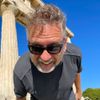Week 167: Heading north
We visit Bodrum and its castle, then turn north for Kusadasi, ready to end the season and head "home".
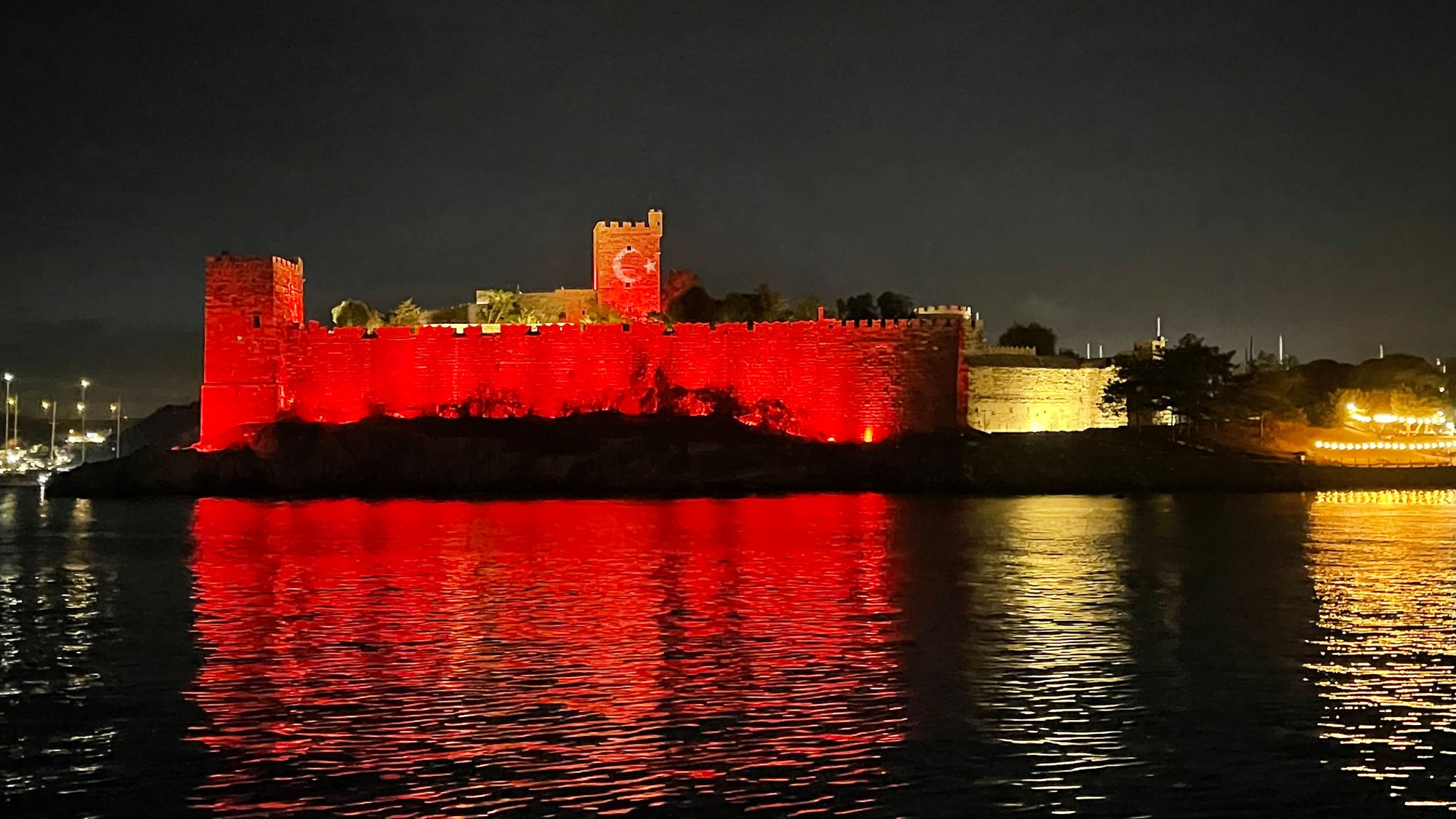
When we arrived in Bodrum last Sunday, we were uncertain about what we would find. The reviews were mixed. It's busy, it's noisy, it's not very sheltered. We almost didn't go.
But the lure of Bodrum Castle and the fact that it's a very popular destination made our decision. We'd go check it out, and if we didn't like the anchorage, we'd leave for a more sheltered bay nearby. We're so glad we went!
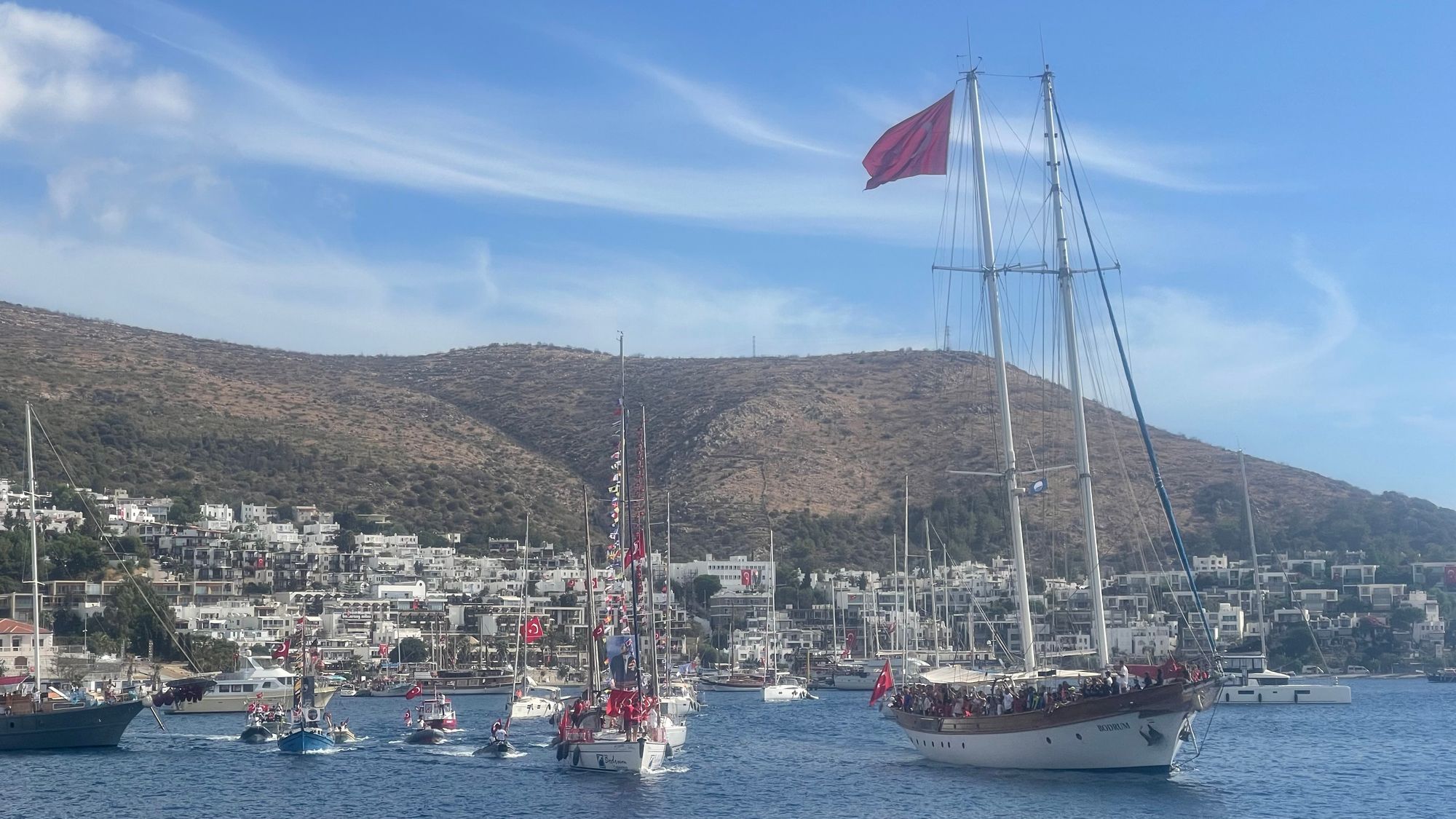
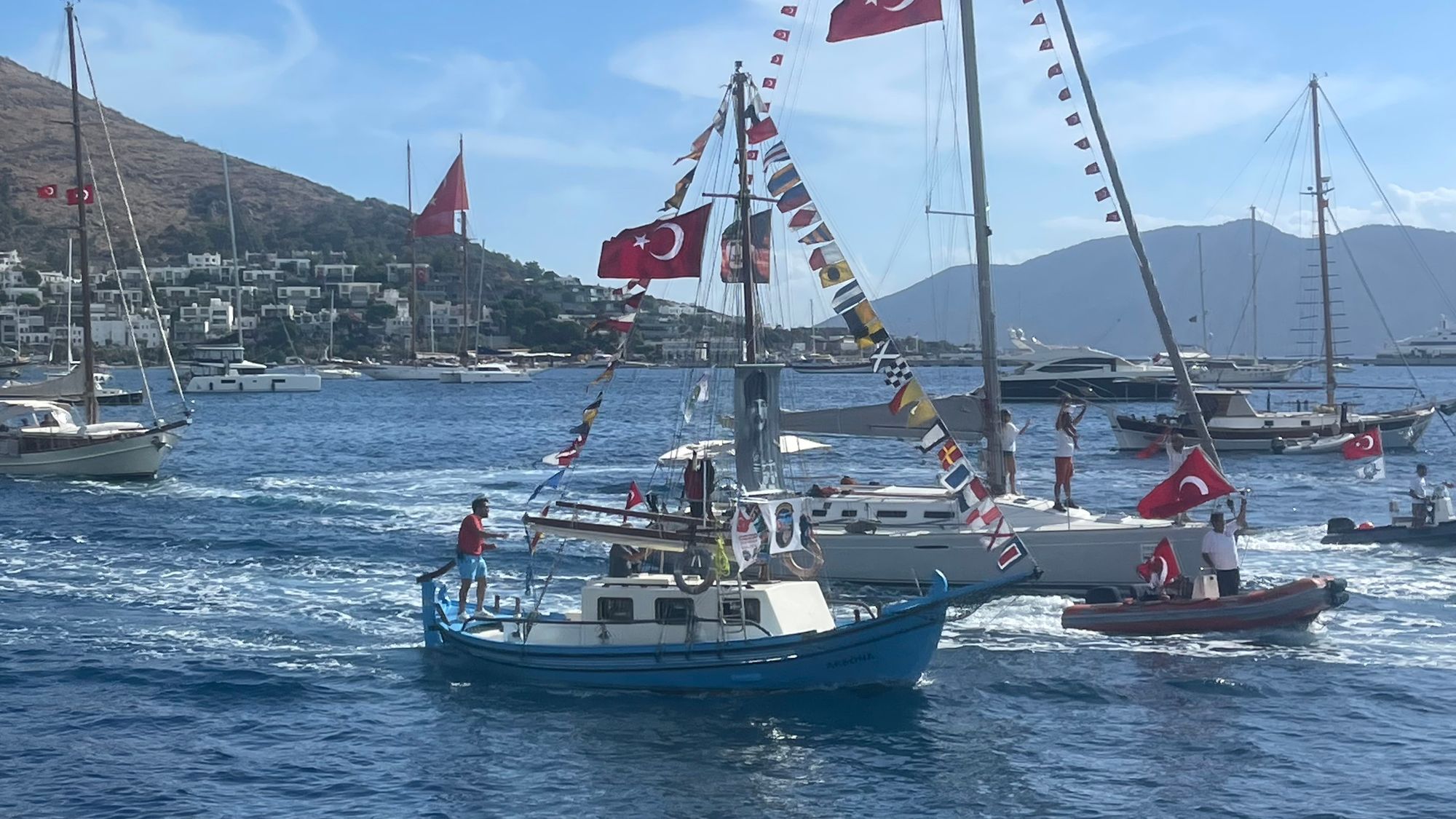
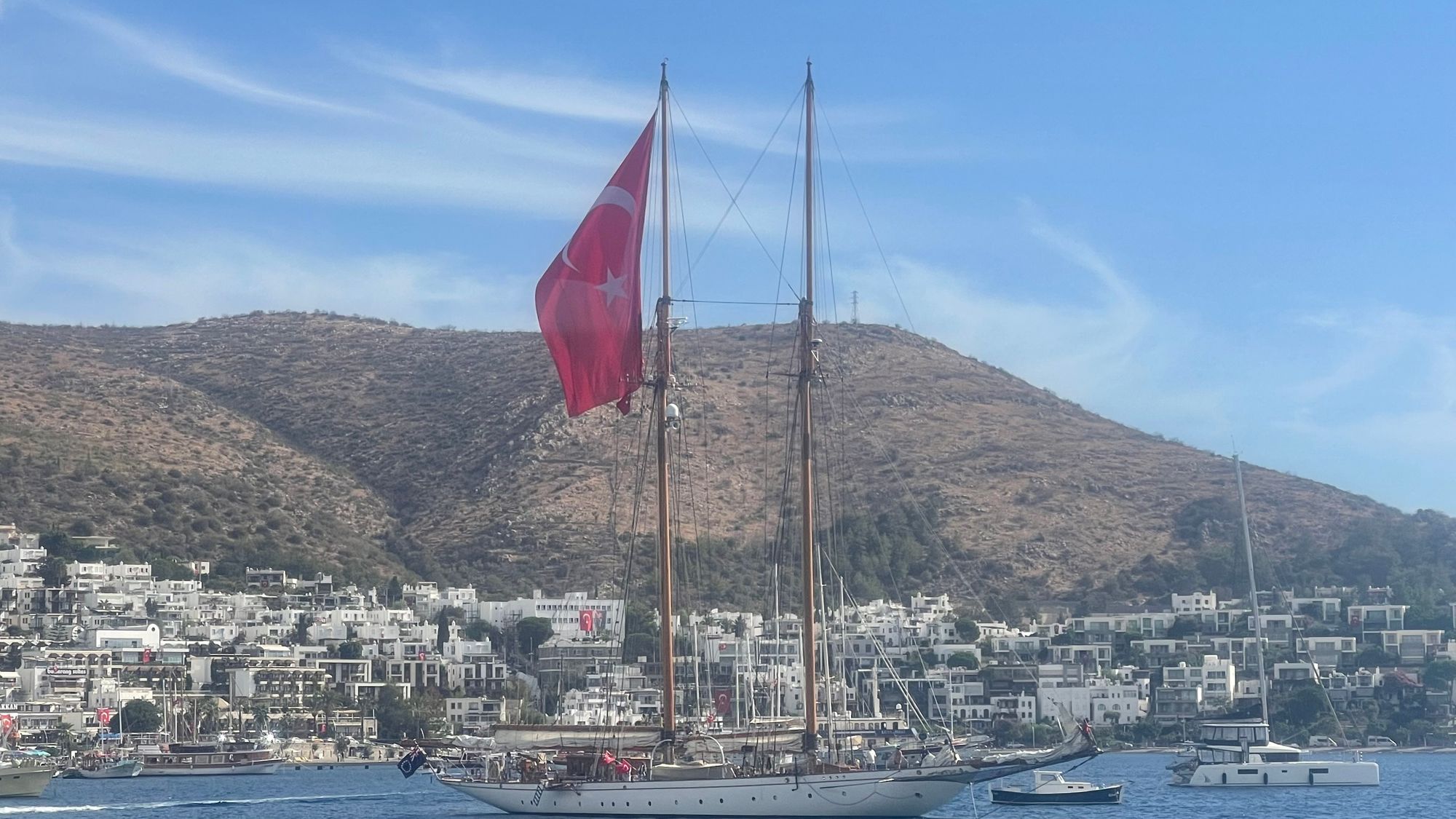
The boats on parade for Republic Day, some with VERY large flags.
Approaching Bodrum, the anchorage was still full of boats. As we rounded the peninsula to the south, a stream of about 20 boats came out of the harbour heading to the west. Turkish Republic Day was in full swing, and there were parades of boats moving around, waving flags and generally making noise and celebrating.
The castle was suitably impressive, but the town was unappealing from the water. When we got to shore, we discovered why. Unlike most places, where the waterfront is a boulevard, in Bodrum, for some reason, the majority of the waterfront is built up with buildings right to the edge of the sea. It makes for an interesting experience; you're in the town centre, buildings all around, right next to the sea, but you can't spot it – other than brief glimpses through the buildings.
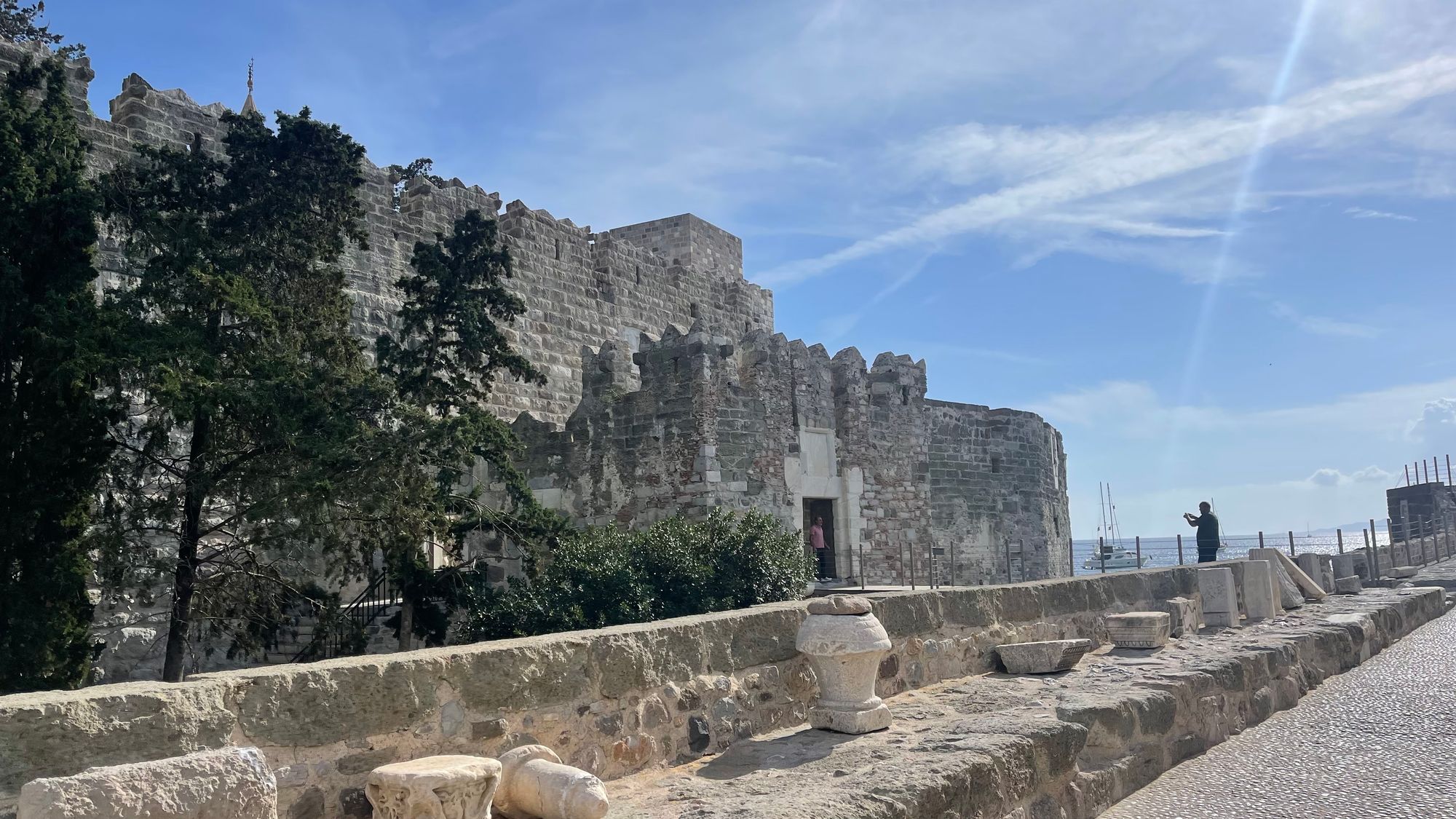
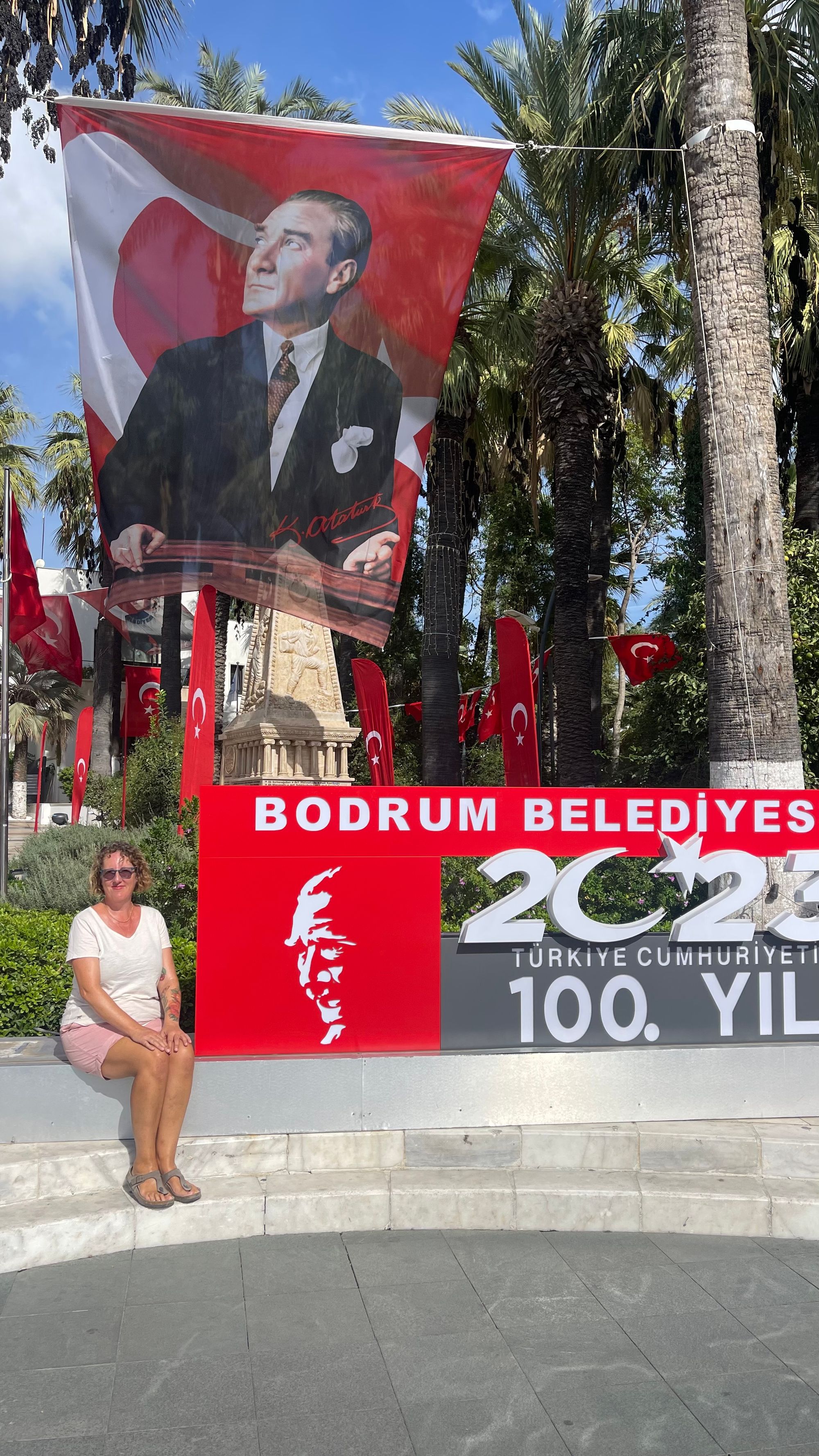
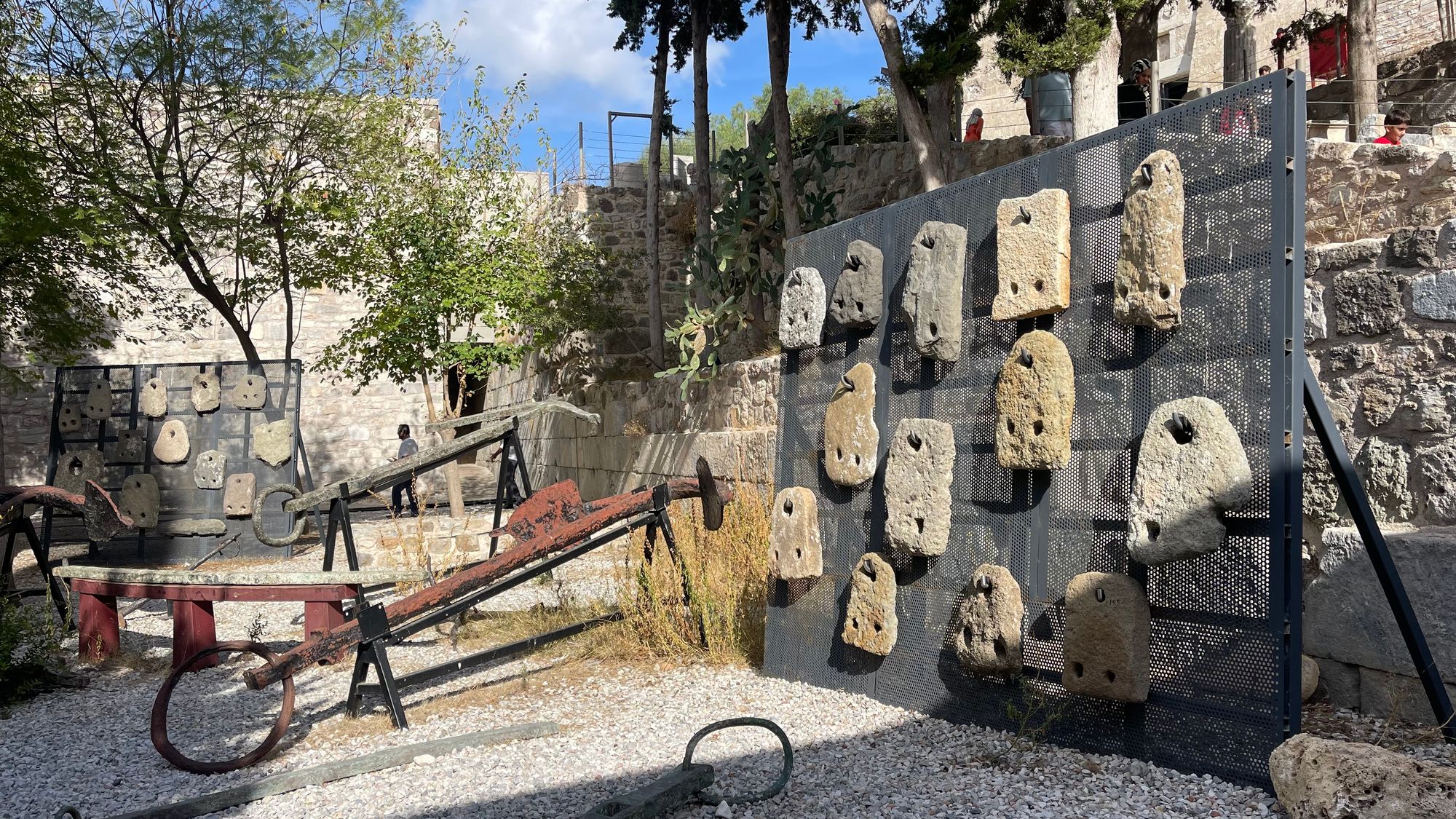
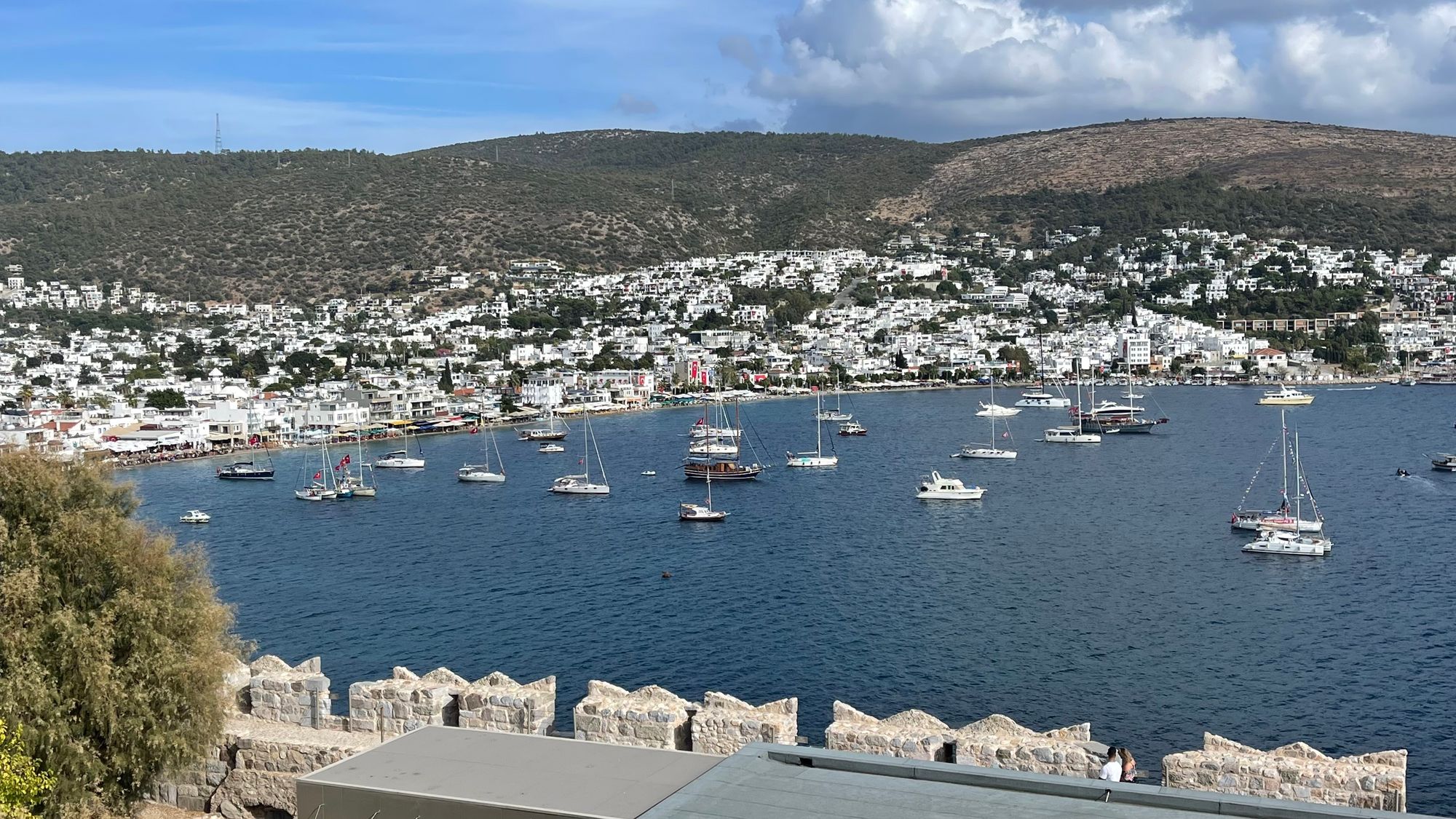
Bodrum castle. The big stones mounted on the walls are all ancient anchors. I prefer our modern one!
I'd love to know more about how it came to be like this. If I had to speculate, it's probably that the buildings are integrated into or around an old city wall. In the Middle Ages, you didn't care too much for beaches; you wanted to keep everyone away.
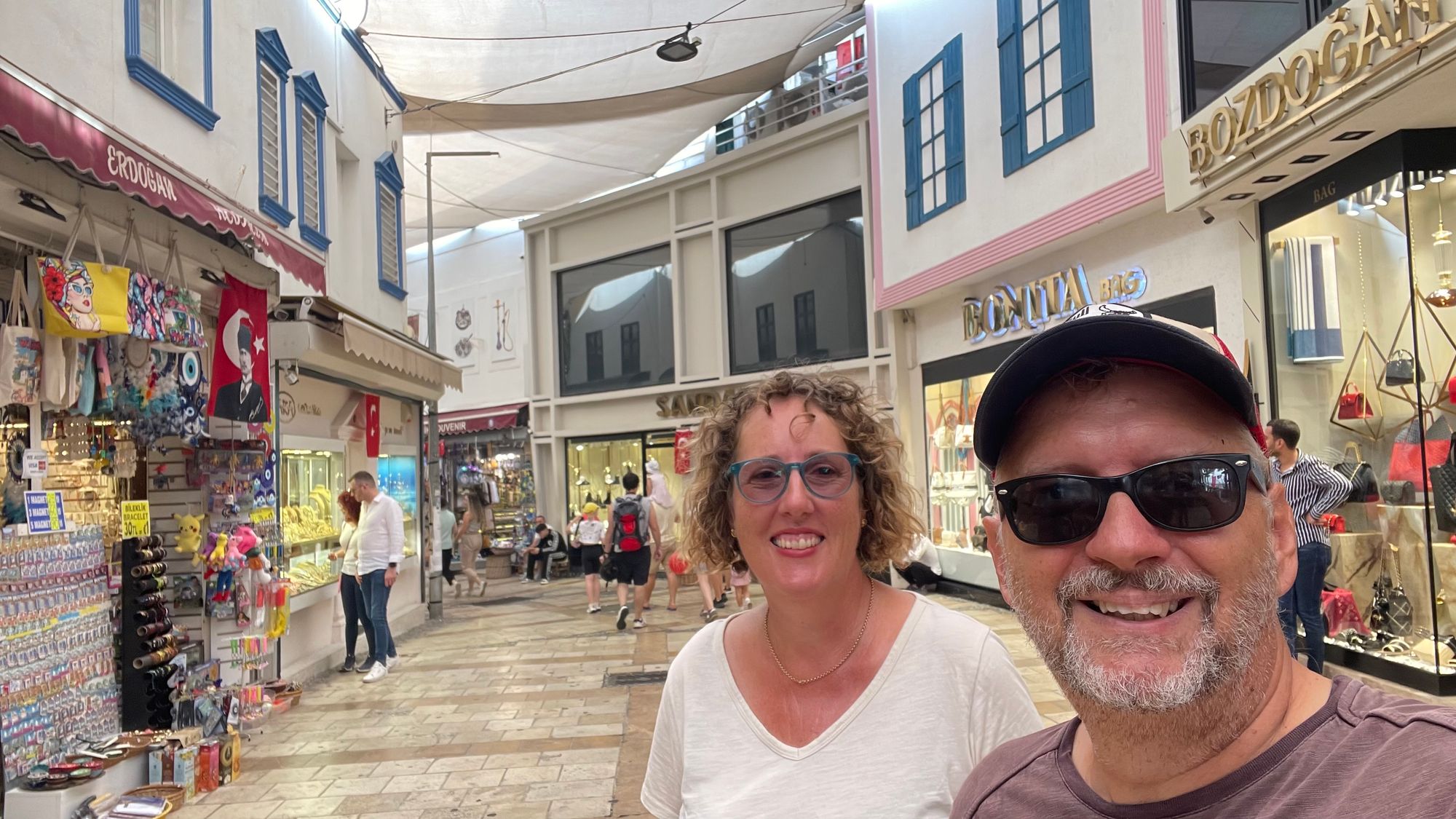
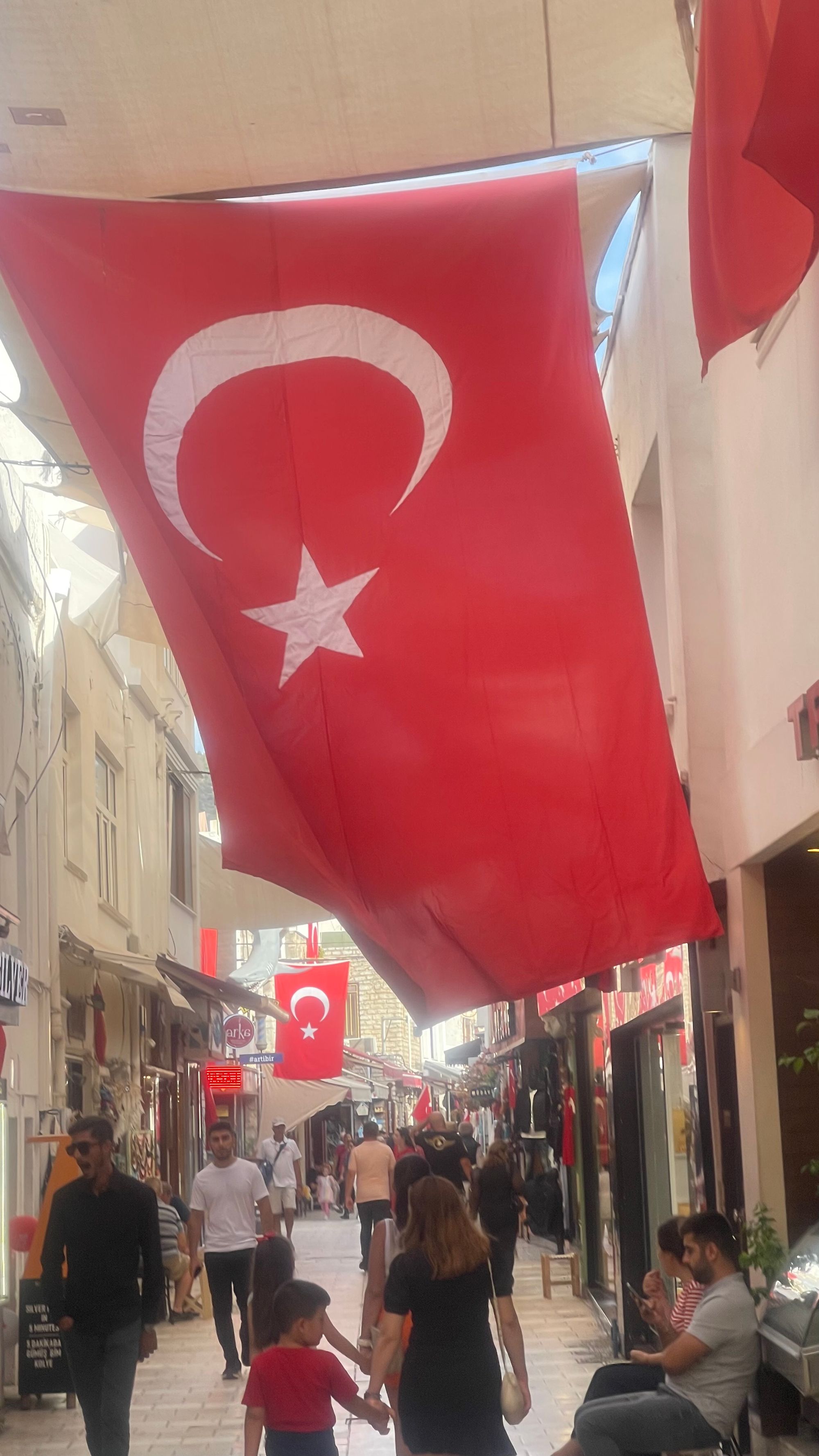
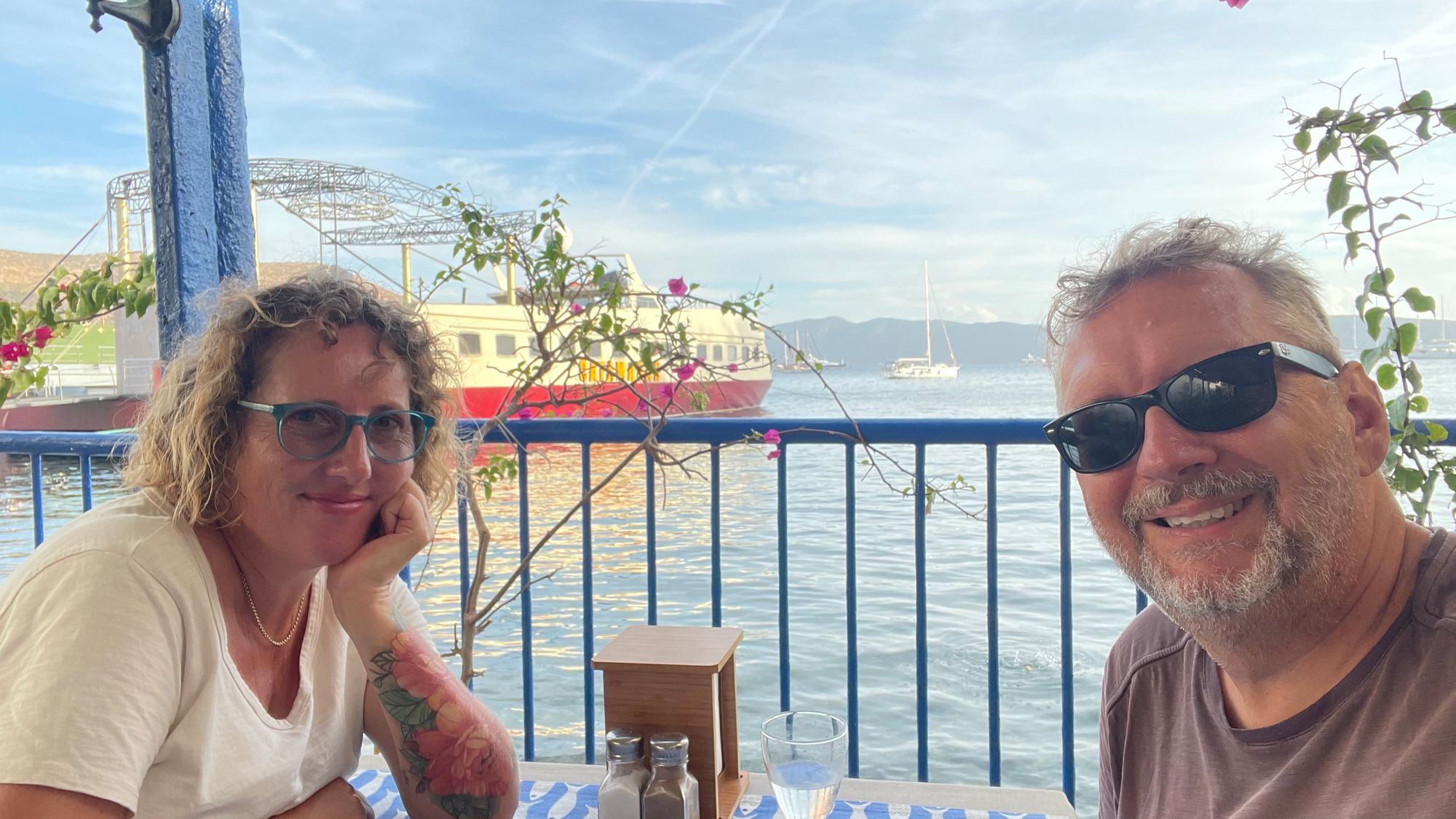
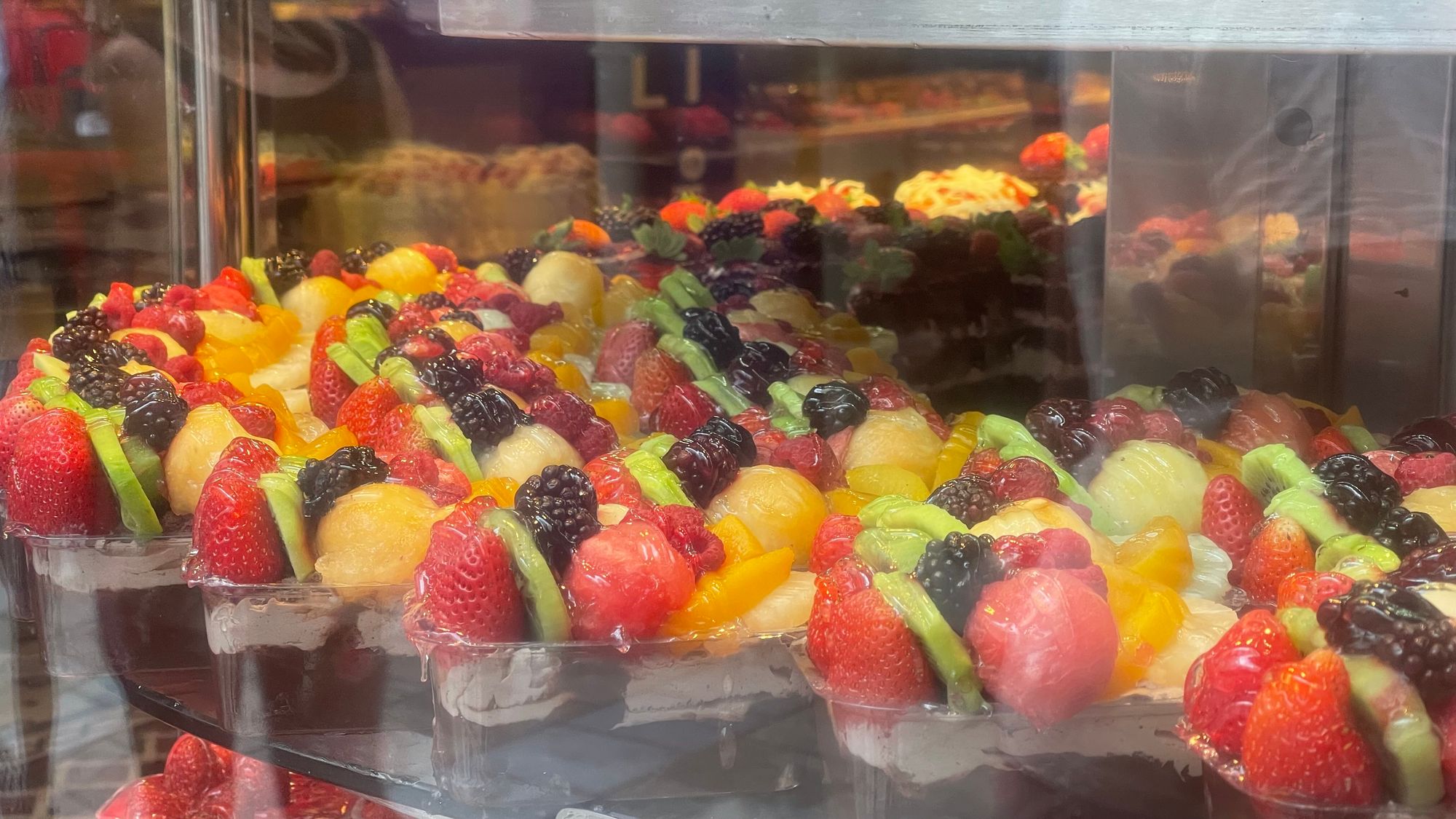
The main street in Bodrum. Anniversary dinner.
Given that the mainland here is only about 2.5 nautical miles from Kos, it's no real surprise that the town has a very Greek feel to it. The architecture of the old city is classic white-washed buildings with bougainvillea everywhere.
We headed to Bodrum Castle, which we enjoyed for several reasons. Built in 1402 by the Knights of St. John for use in the Crusades, it was continually used until World War One. Suleiman the Magnificent took control of the castle in 1532, part of the terms of settlement for his successful assault on Rhodes, where the Knights of St. John were defeated (they then retreated to Malta, where they were renamed as the Knights of Malta and existed there up until the 18C where Napolean defeated them).
Eventually, the Italians took control of this part of the Aegean and used the castle as a base where it was bombed, then abandoned during World War I. It remained abandoned for a few years until 1960, when the Turkish Government decided to use it to house an underwater archeological museum.
Naturally, the castle wasn't the first structure built here. No, that would be the Mausoleum of Halicarnassus, one of the 7 Ancient Wonders of the World. It still exists, kind of... although damaged by earthquakes and somewhat collapsed in the 13C, it still existed. The Knights of St. John used the marble and ground it up to make limestone to bind the mortar of the castle. Apart from some small parts of the foundations, that's all that's left today.
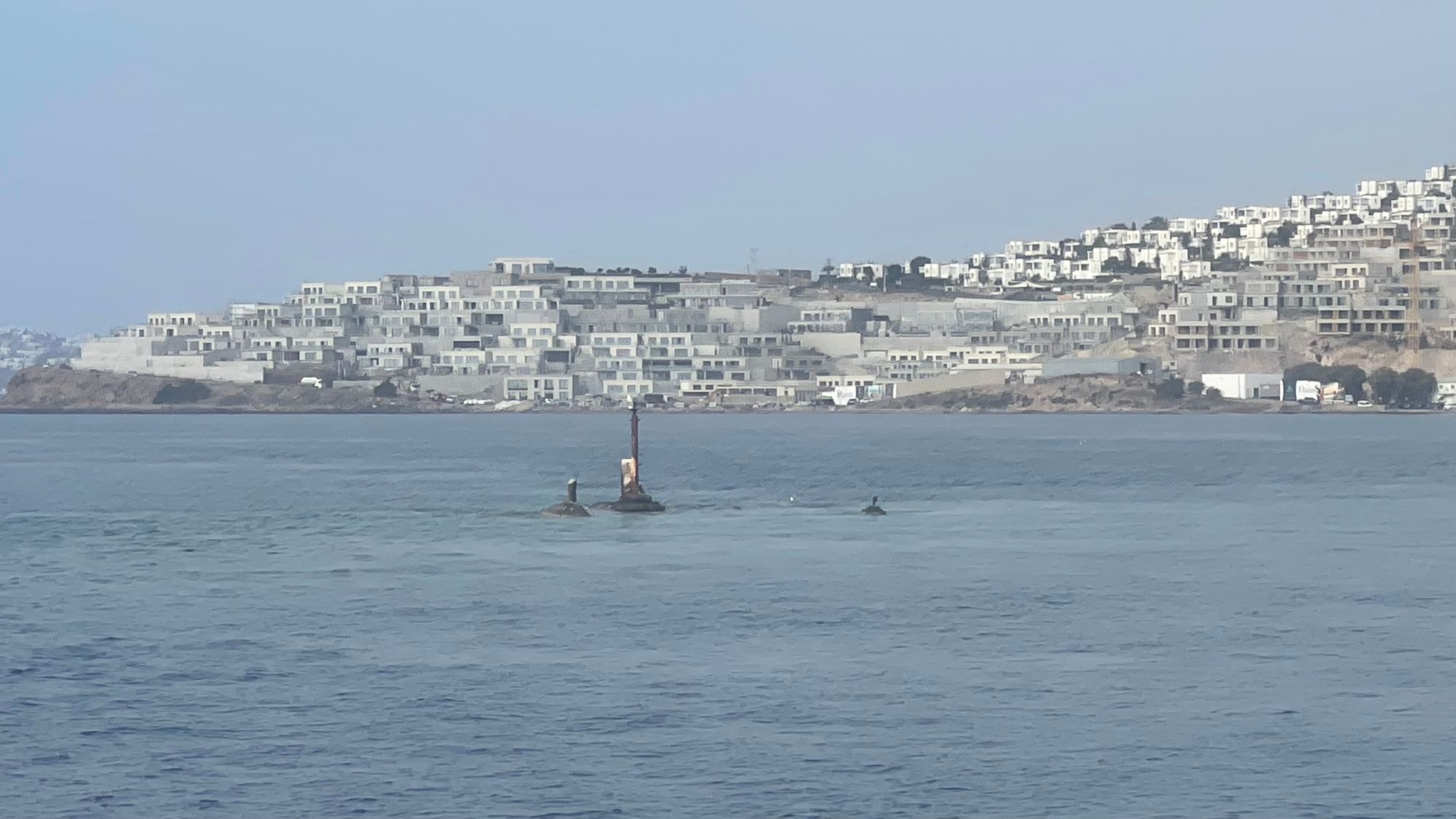
The Museum of Underwater Archaeology was okay but not exceptional. Perhaps the most fascinating part of it was reflecting on the advantages we have with modern charts. One of the reasons that the museum is here is because of an underwater reef off the peninsula to the south of Bodrum. There are almost 100 wrecks spread around within a couple of kilometres, all holed on the same underwater rocks, which are clearly marked and easily avoidable on our modern charts.
Another interesting part of the castle is that all the knights and artisans who worked on it or were based there had their coats of arms mounted on the walls. Every wall is decorated with traces of the people stationed here before, including Henry IV of England.
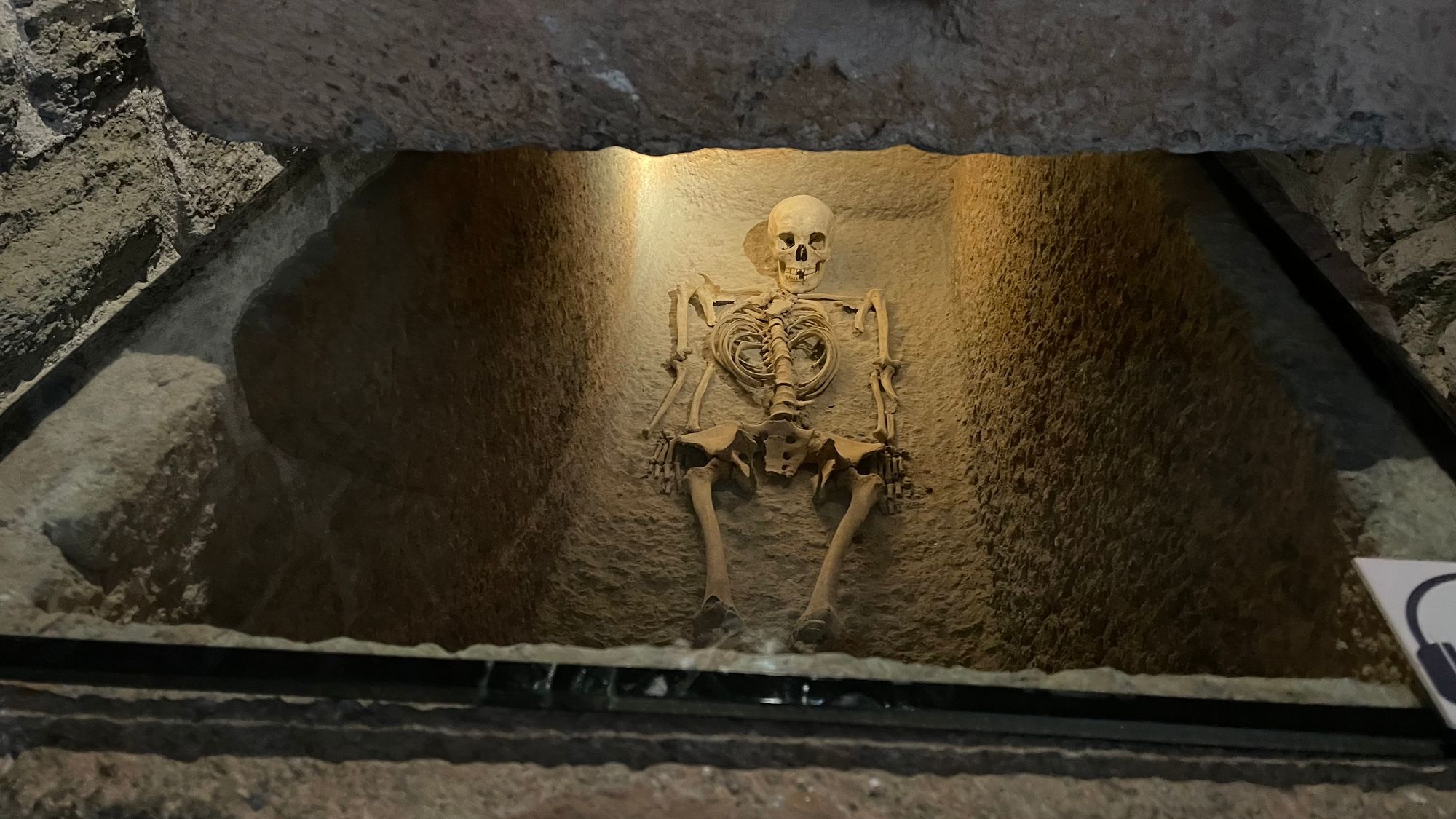
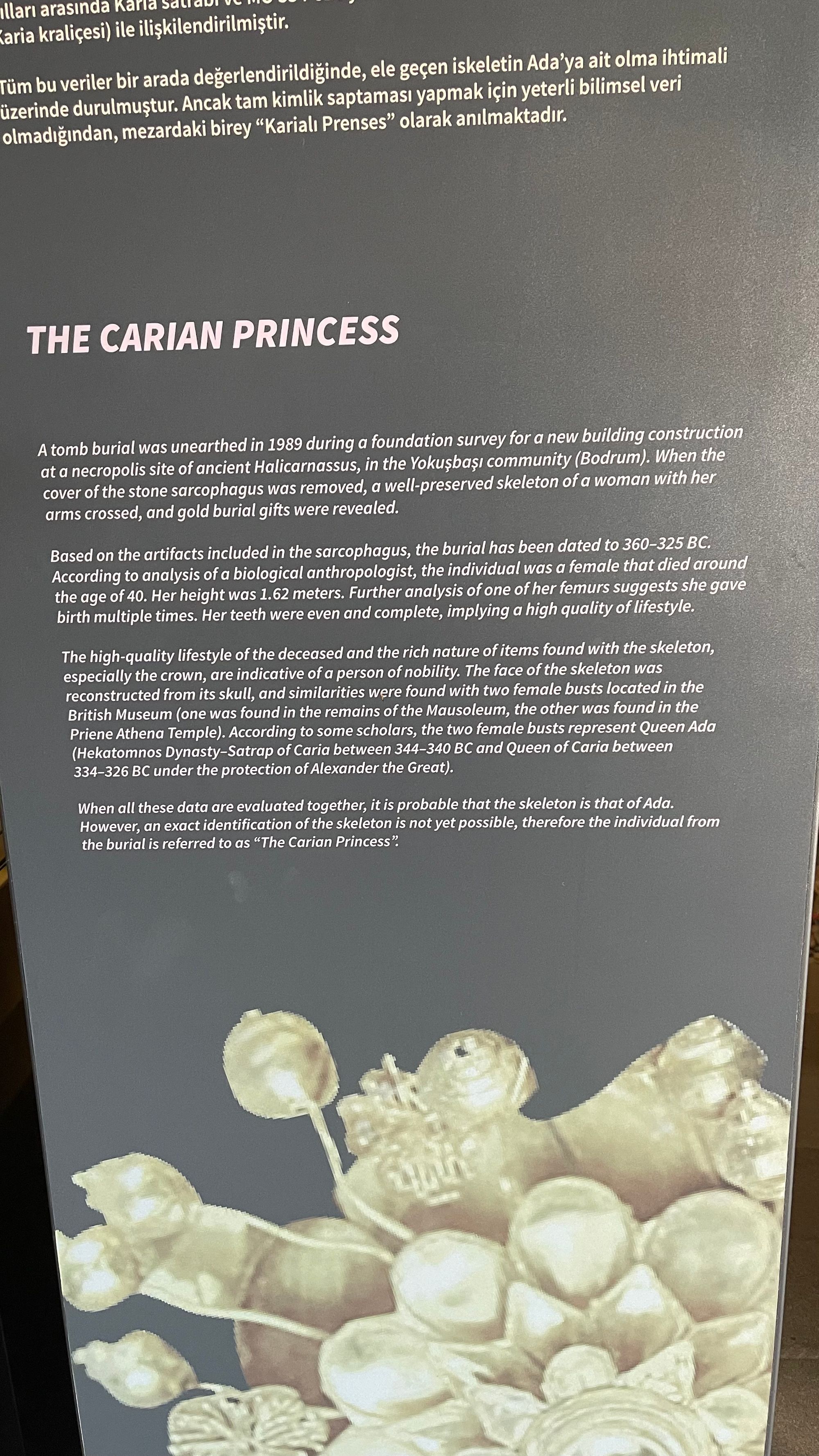
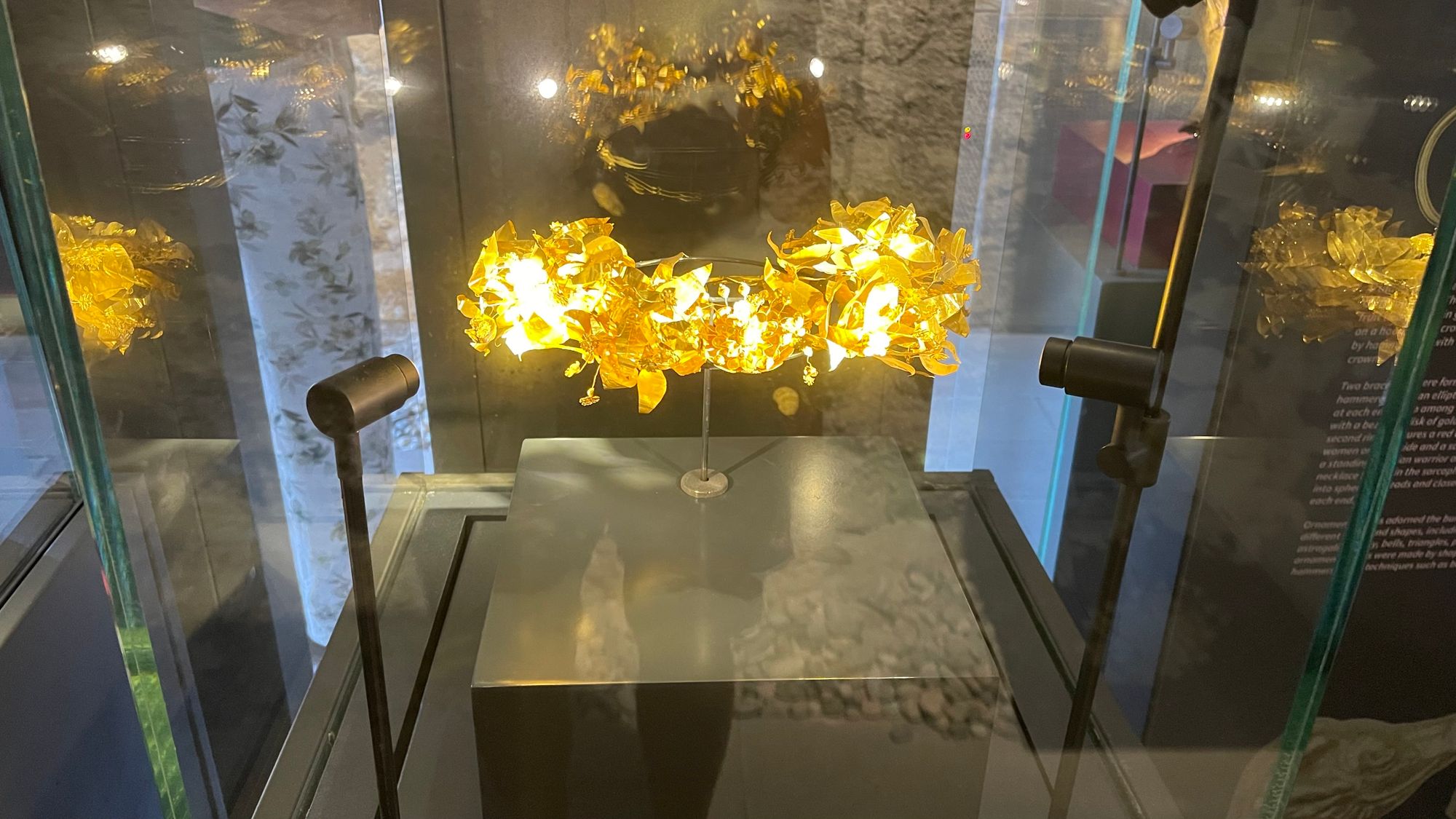
Princess Ada?
I also enjoyed the exhibit on the Carian Princess, mainly because they have a pretty good idea of who it was. Ada of Cara lived from 377 to 326 BC and was an Ancient Greek Princess. When Alexander the Great invaded Caria, she surrendered the city to him and adopted him formally as her son. In return, he made her the princess of all of Cara, and she led the siege of Halicarnassus. Naturally, there were a lot of statues made of her. When the body of a very royal personage was excavated, a reconstruction of the skull was created and has a striking resemblance to Ada. Of course, there is no way to be sure, so they name the exhibit the Carian Princess, but it does seem likely this is Ada.
Life aboard is not all ancient ruins; it's also the hunt for coffee. We found a great place called the New Zealand Coffee Company and took the opportunity to stock up there with more beans.
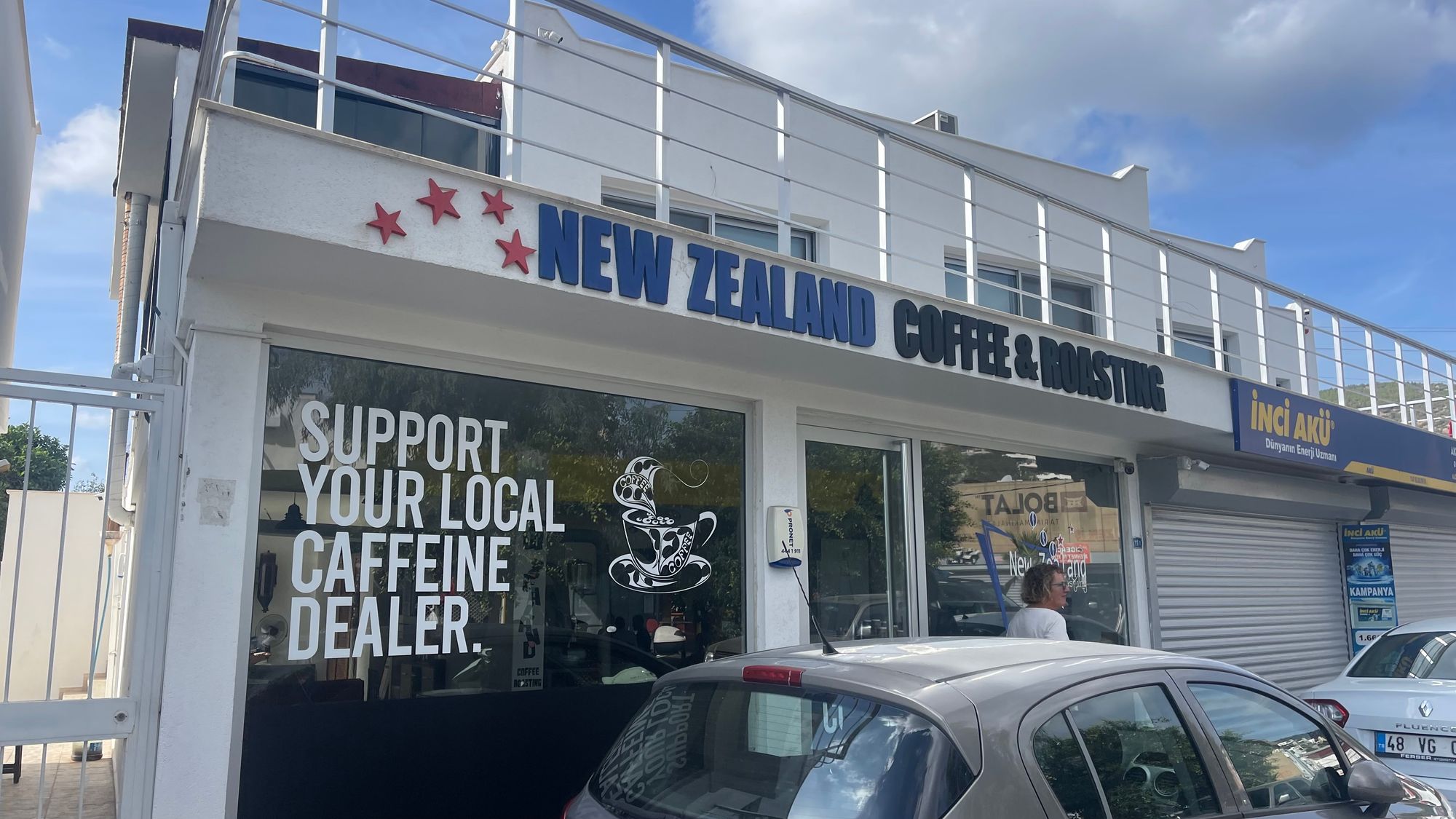
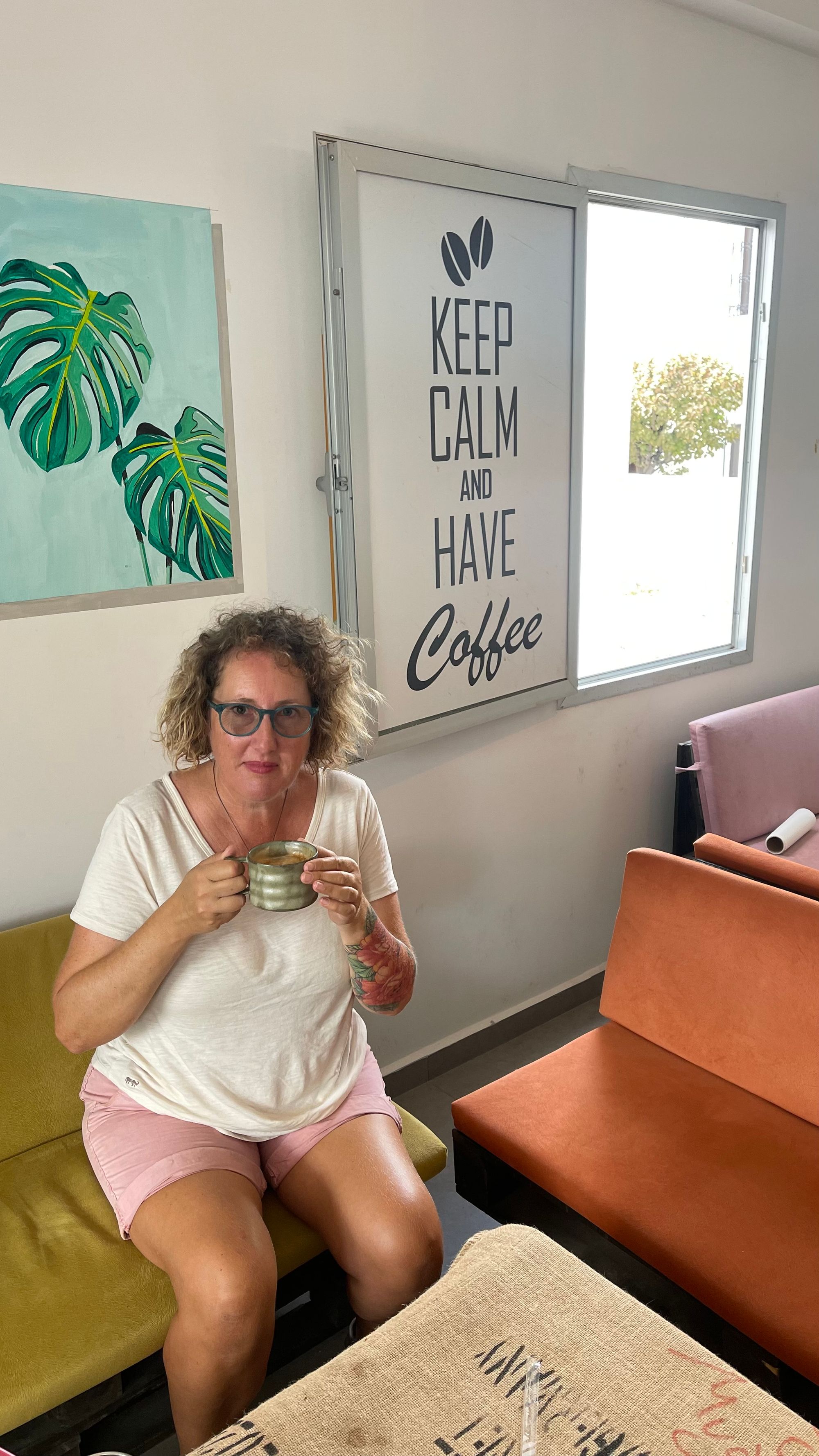
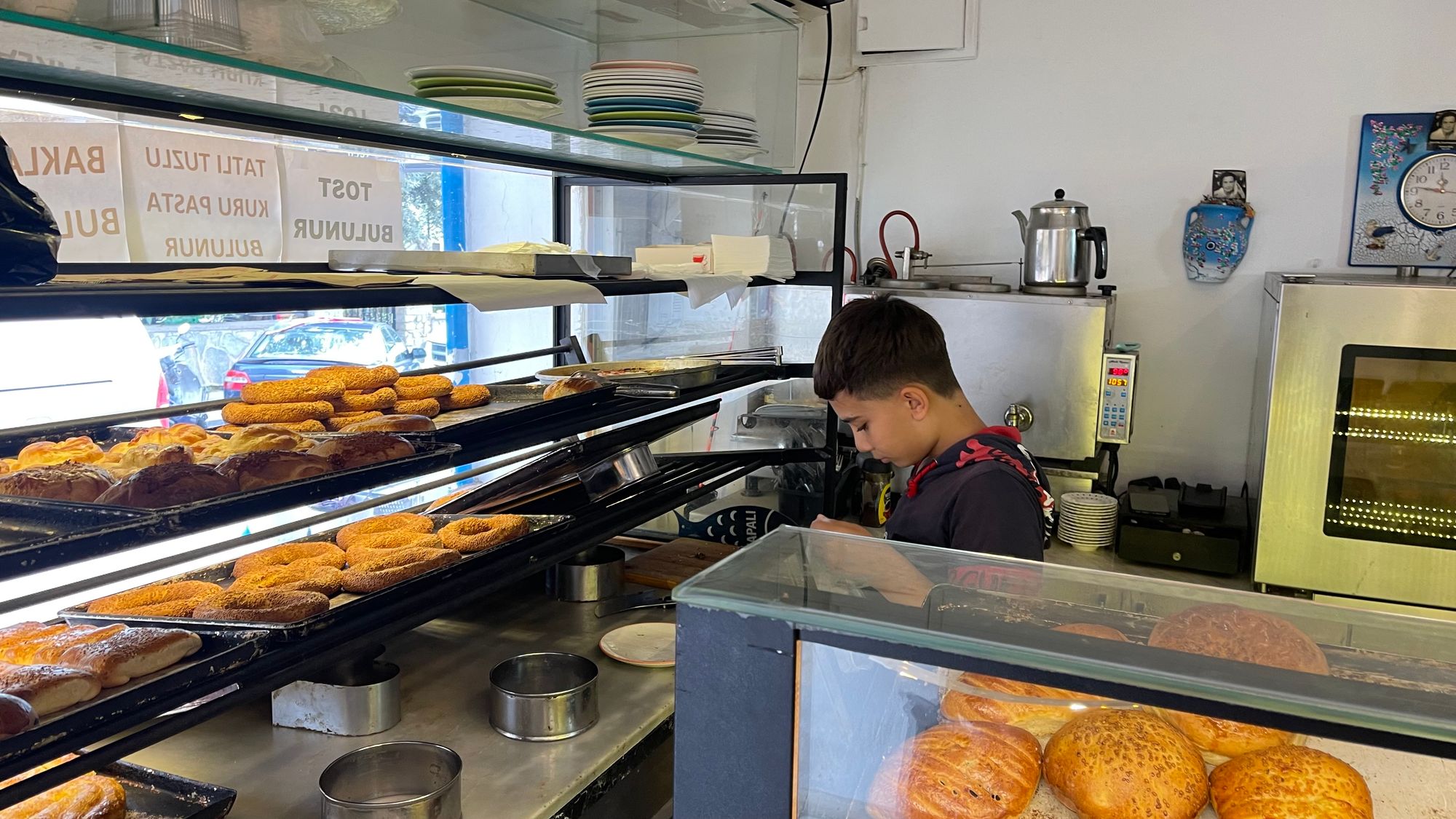
Coffee time. Coming back for lunch this young boy very diligently served us borek. I suspect we were over-charged, but he was trying so hard I didn't challenge it (or maybe that's the trick!)
With the bimini almost ready, it was time to head back north. On Monday, we left Bodrum and backtracked to Yalikavak, where we anchored overnight. Then, on Tuesday, we shot straight up to Didim.
We wanted to stop by Didim to make sure that we could visit the Temple of Apollo. Although it's a small site, it was worth the detour. It was one of the largest temples built in Ancient Greece, and even now, the columns are huge and imposing. It also had its own oracle in the centre, based this time around an ancient spring and not a hallucinogenic gas cave! It was interesting to see, and we enjoyed the cafe, which had a spectacular view of the site as well.
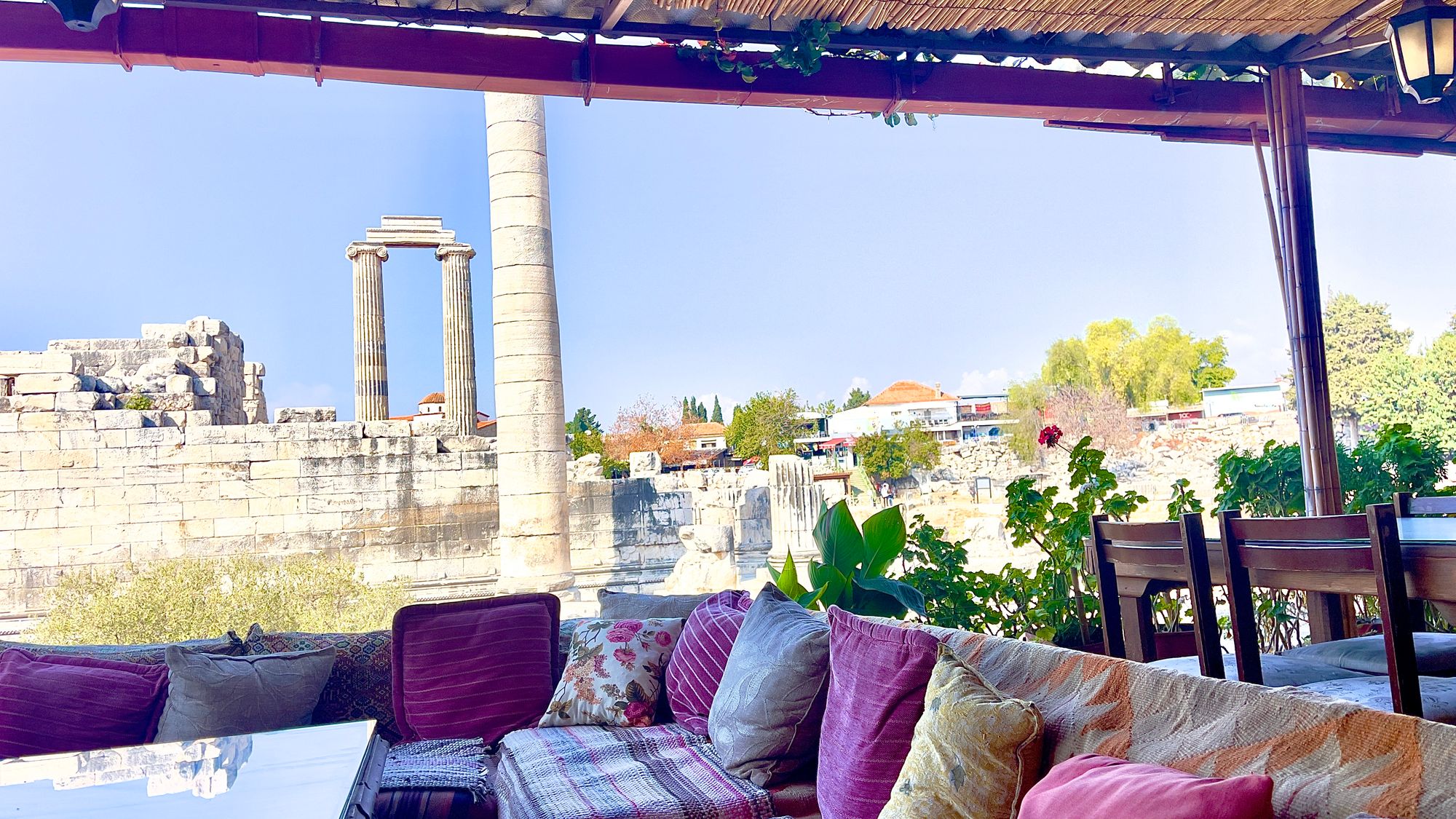
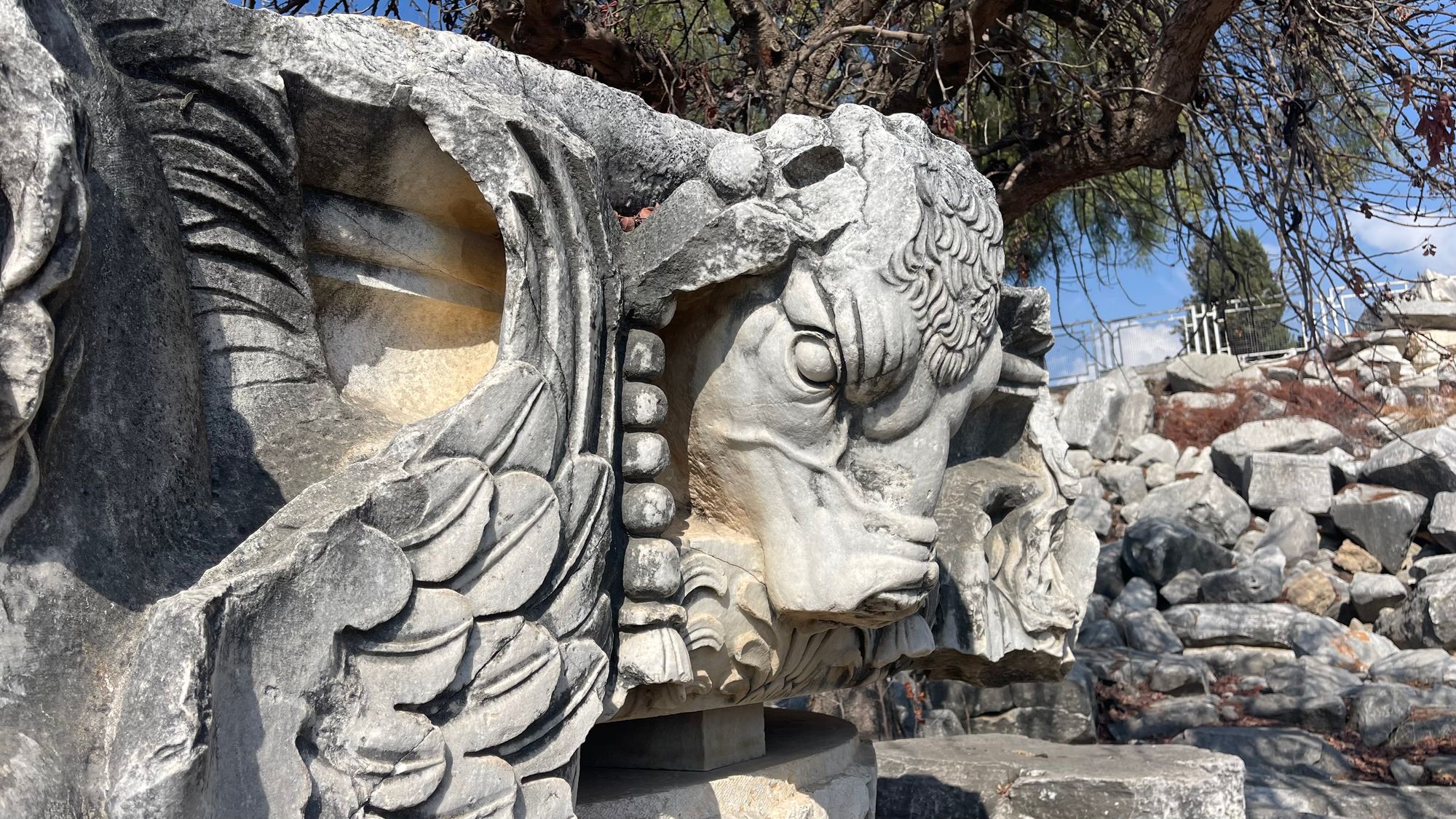
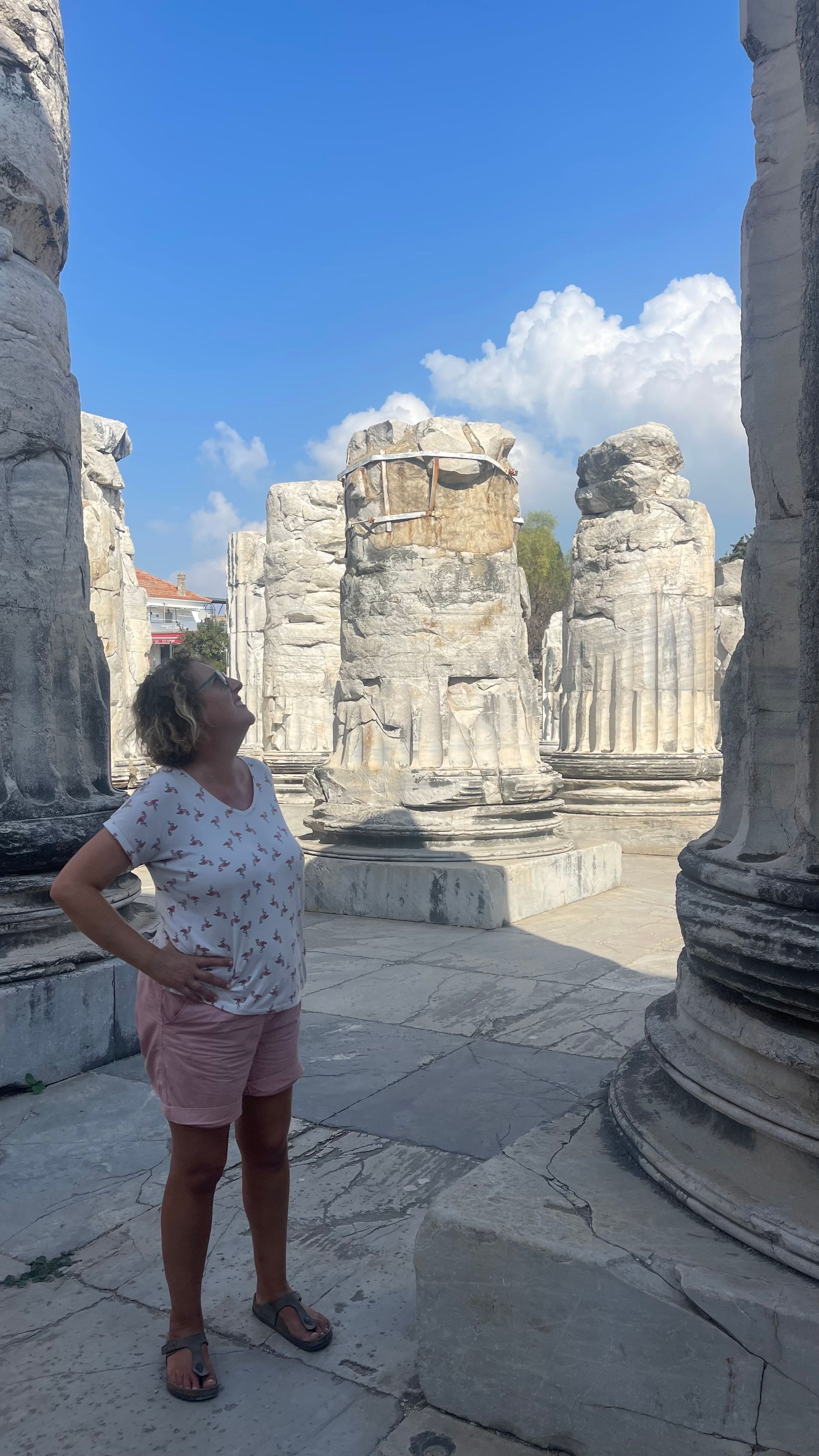
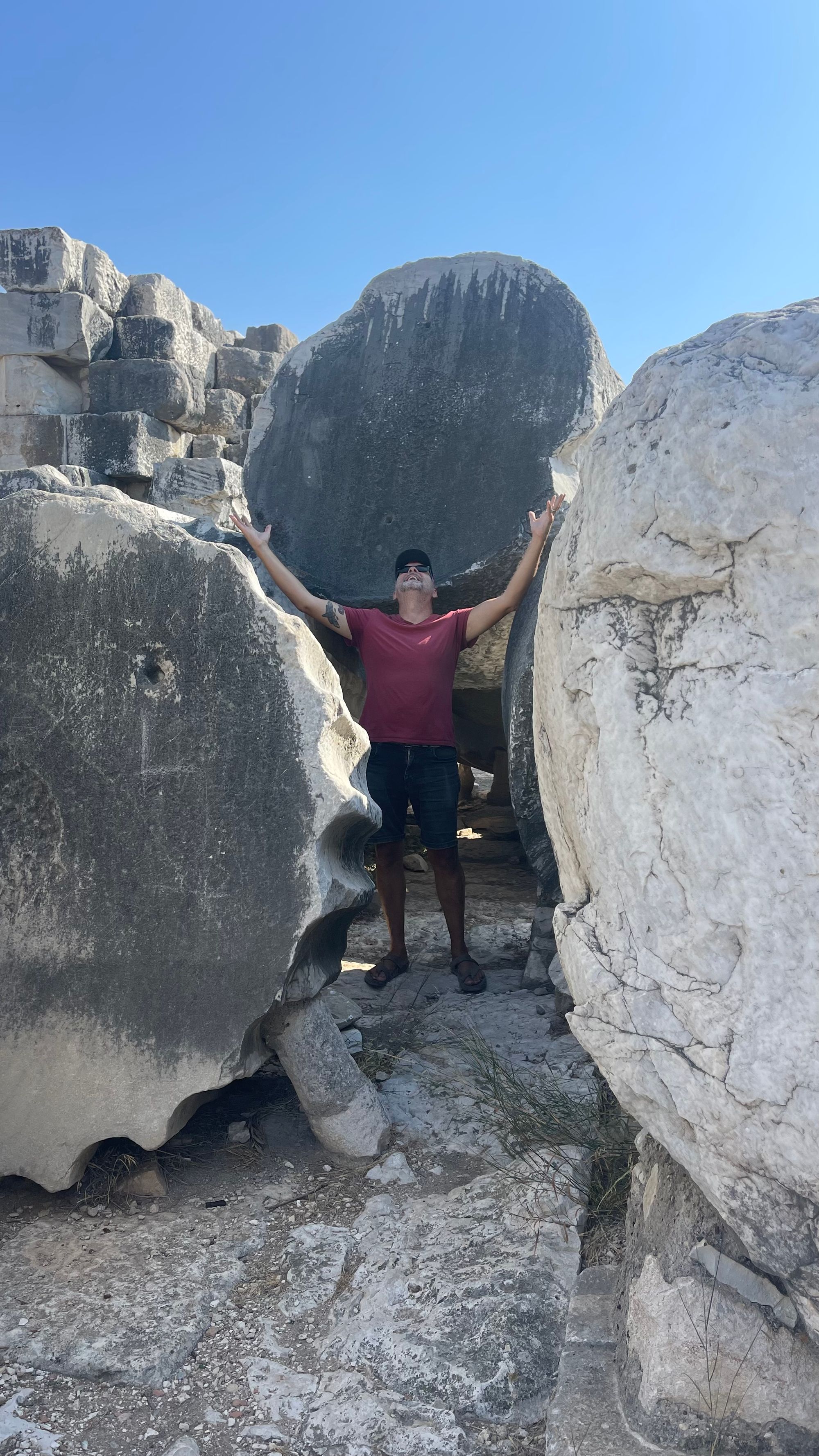
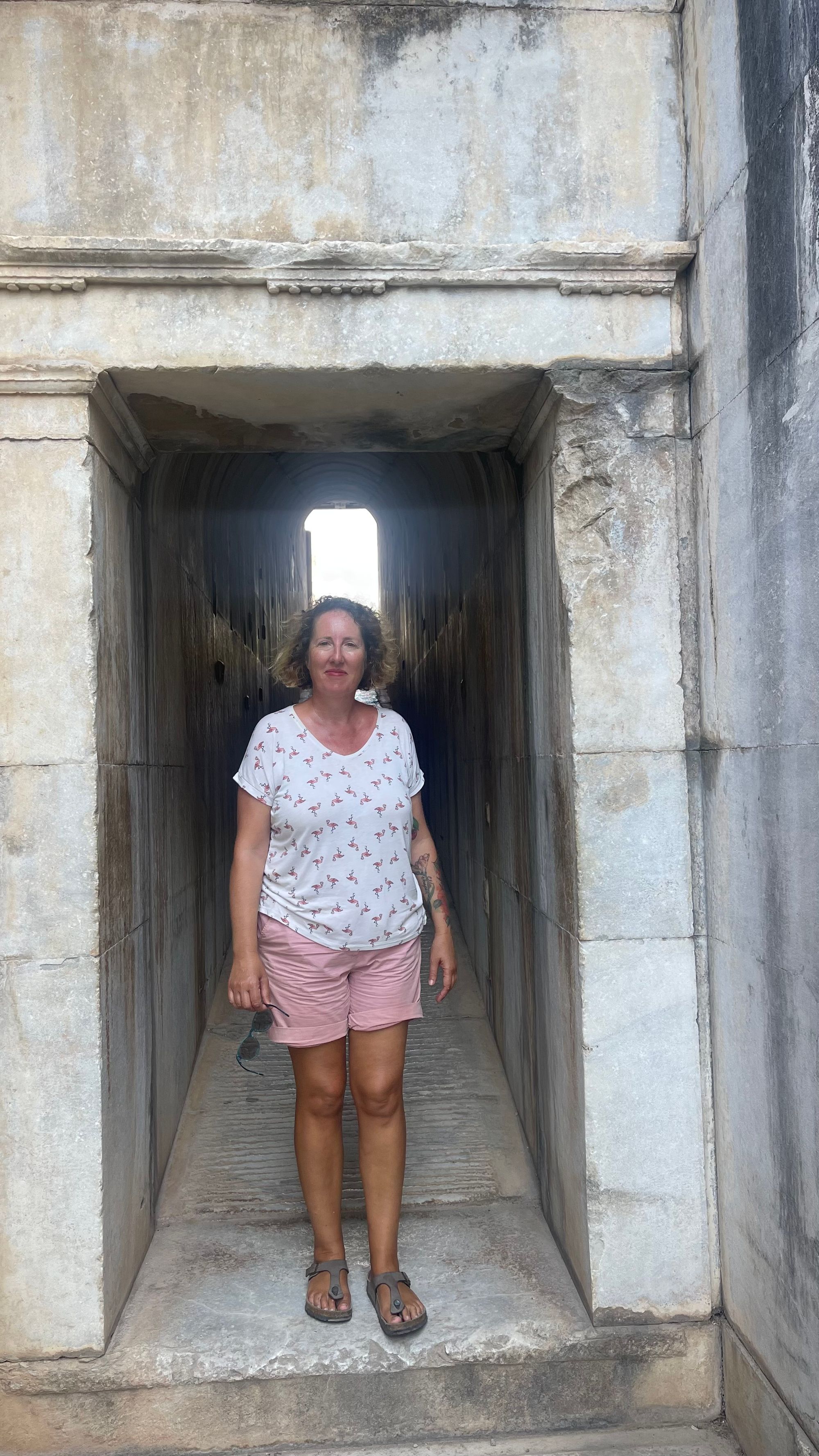
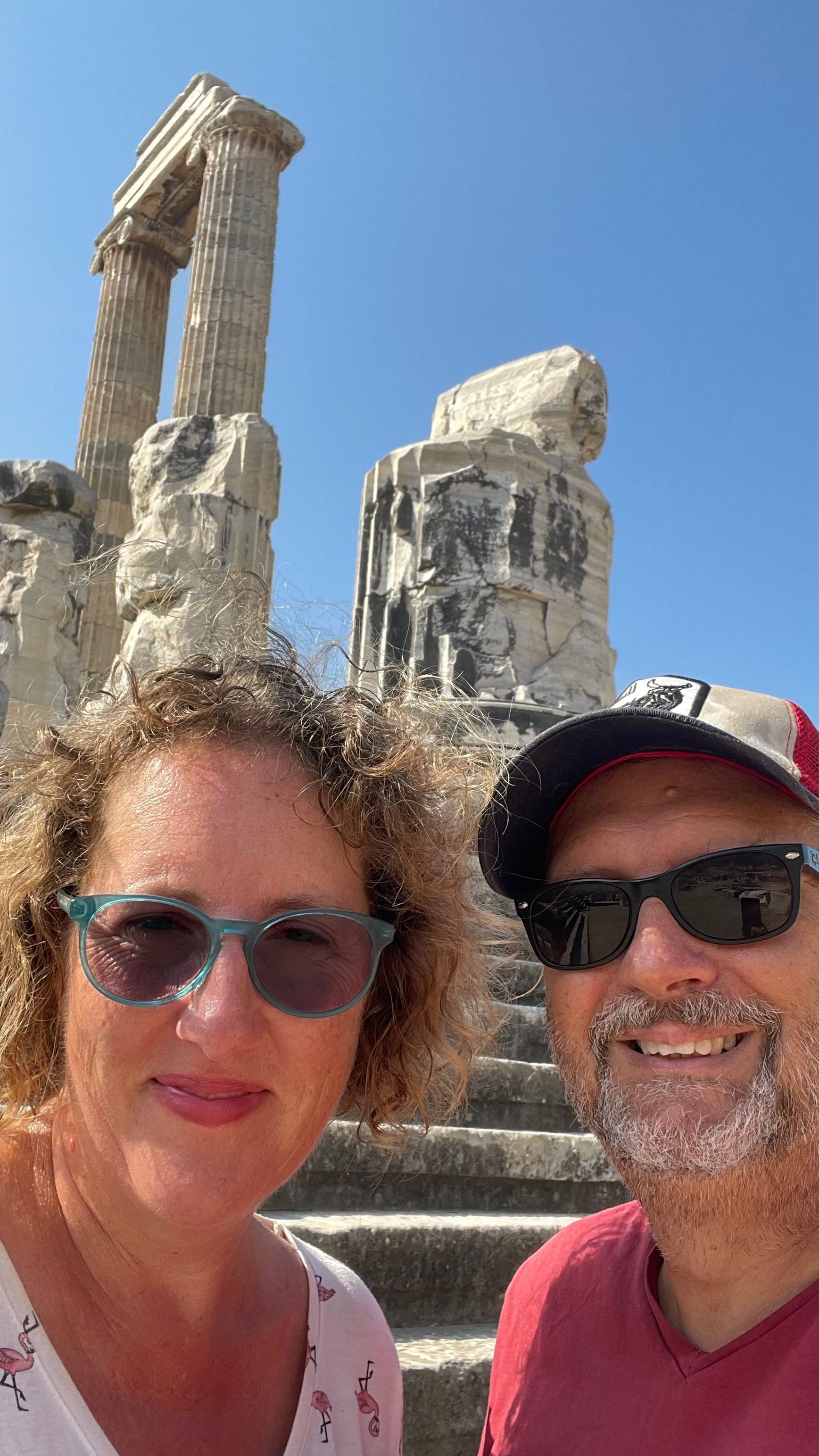
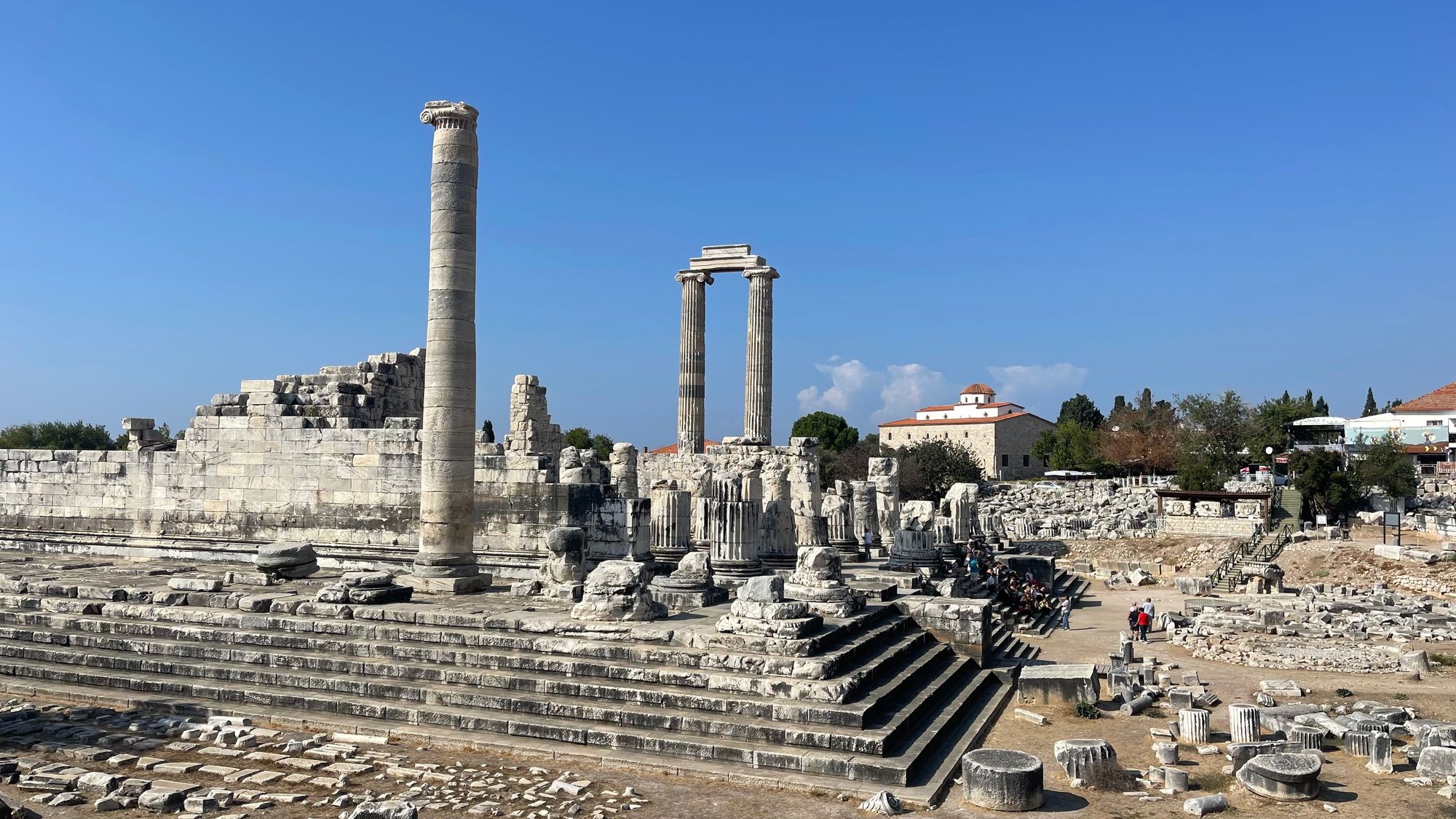
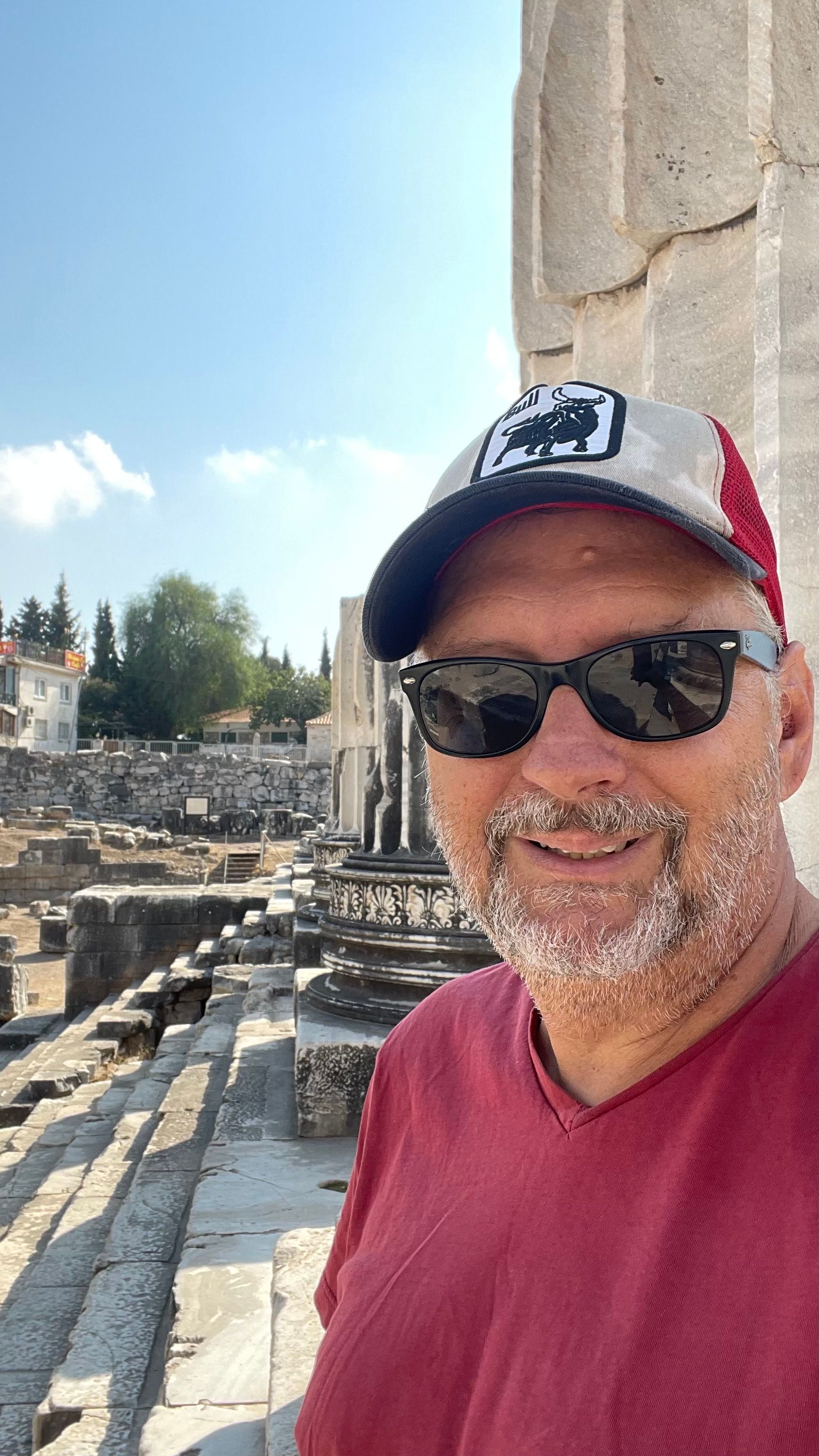
Temple of Apollo
The weather is always a concern on a boat, and finally, we are really getting towards winter. That means the end of the northerlies and time for the southerlies to start. As a general rule, the northerlies are strong but consistent; it's the southerlies (carrying the heat and moisture up over the Mediterranean from Africa) that cause the thunderstorms.
With the change coming, we did a big day on Wednesday, leaving Didim to return directly to Kuşadasi. It was already a little rough south of Samos, but once we got up and around the corner, we found plenty of shelter north of Samos and anchored up in Kuşadasi Bay for a couple of nights.
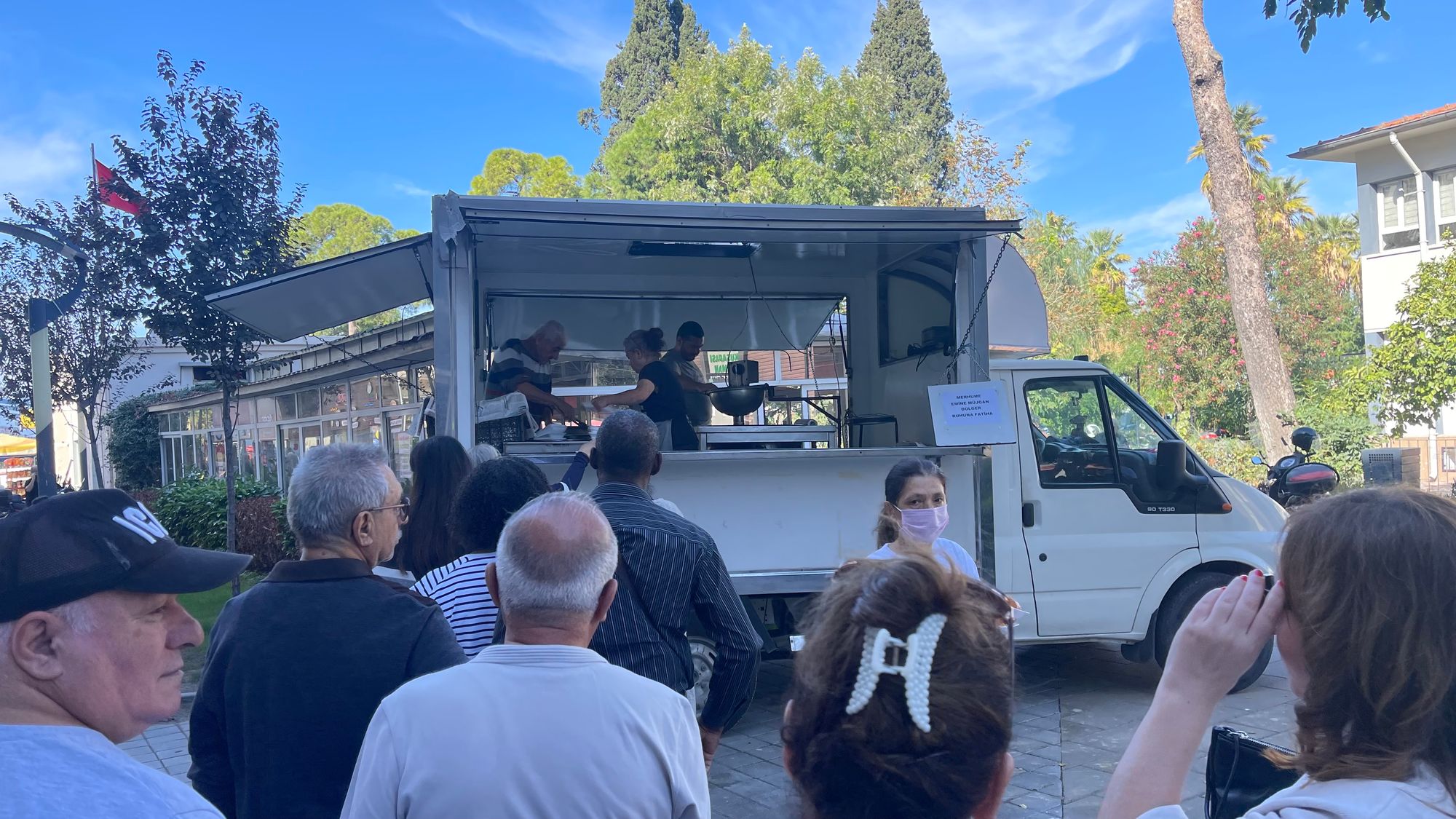
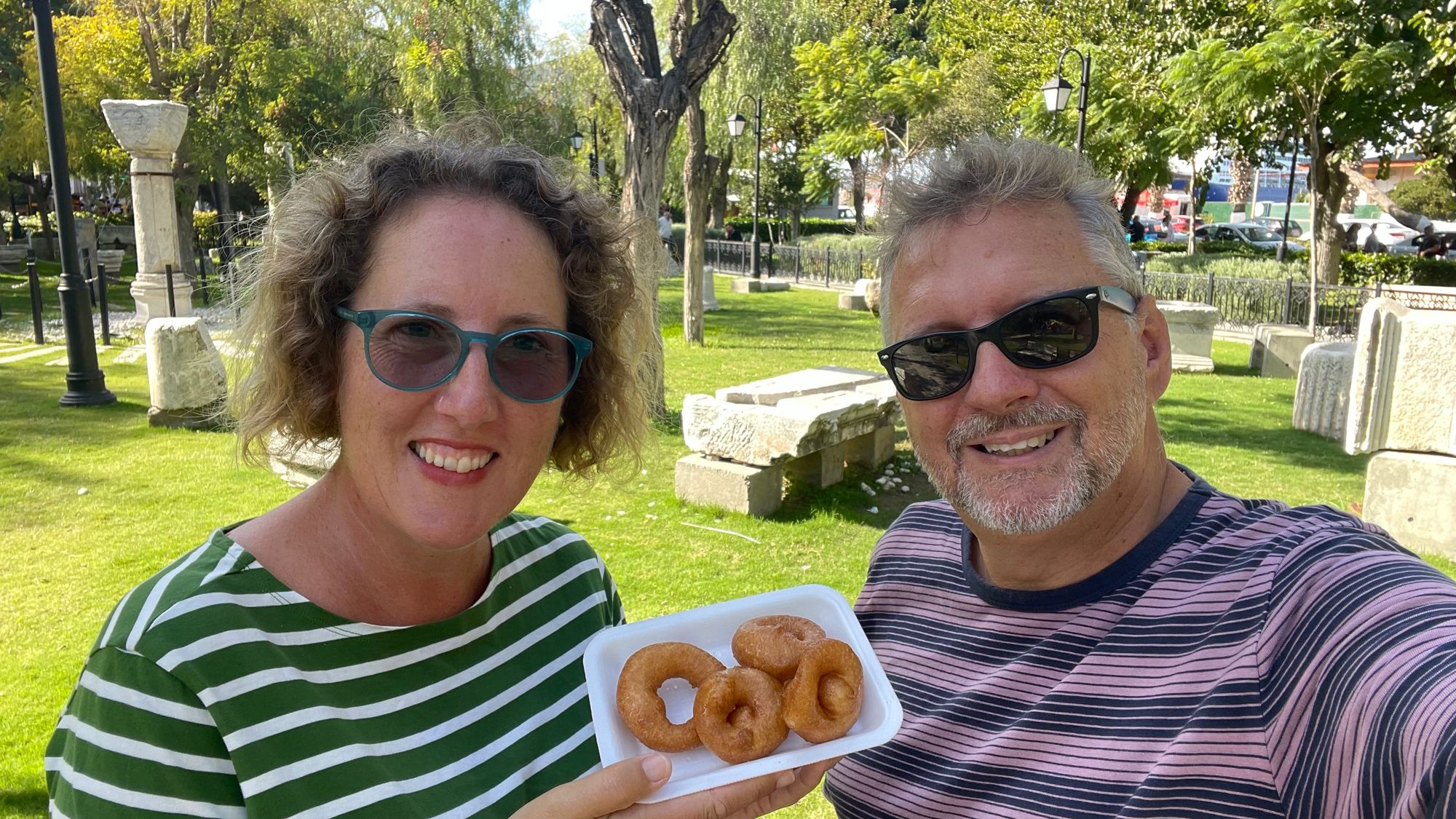
We were excited to find a truck where they were giving away free honeyed donuts! Turns out this is a Muslim tradition here, if someone dies they give away donuts in memory of them. A custom I can get behind!
Friday, we checked into the marina, and we've now been here for two days while work continues on the bimini. With luck, we should be completed this today, which will allow us to leave tomorrow and return to Greece.
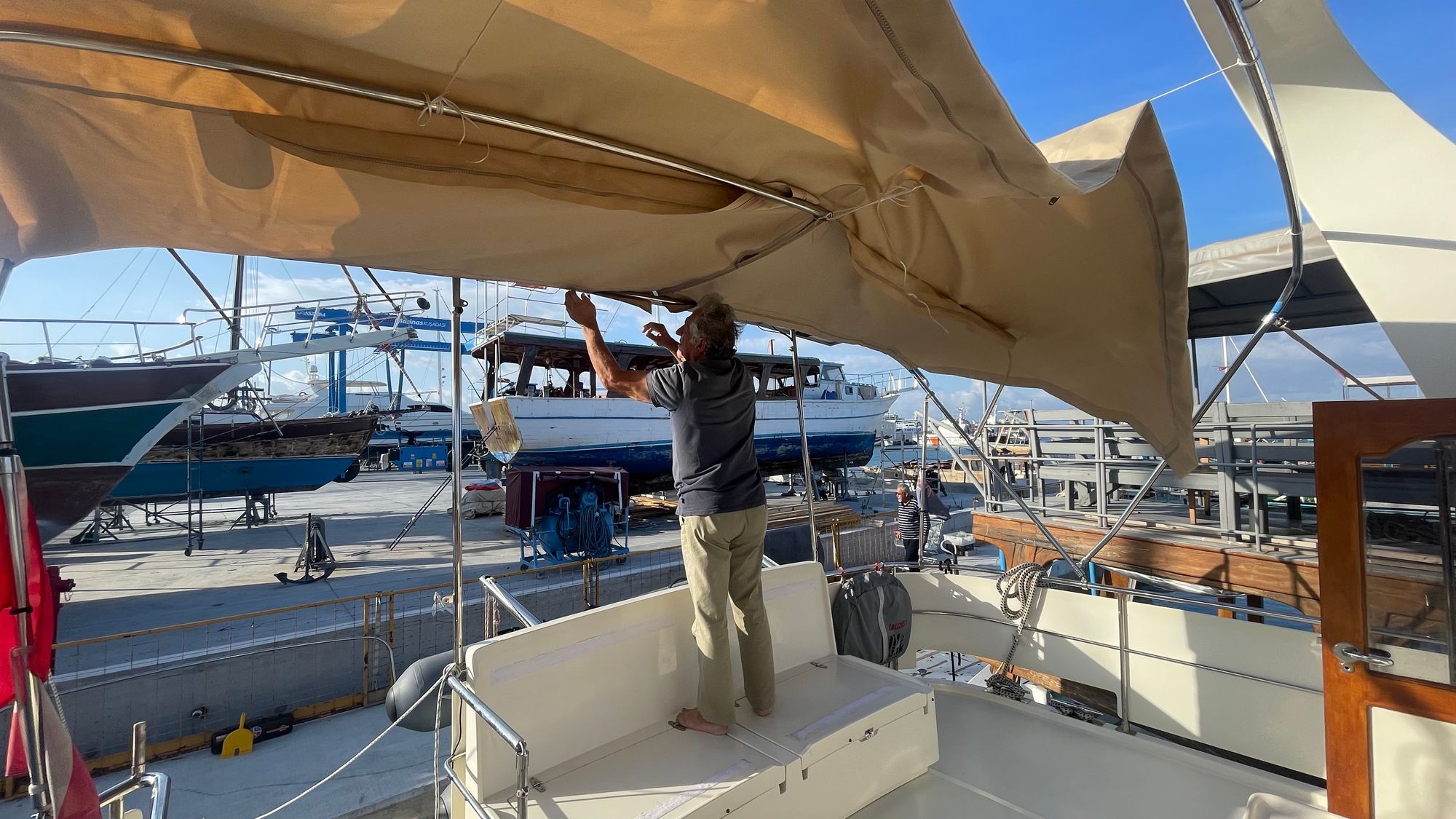
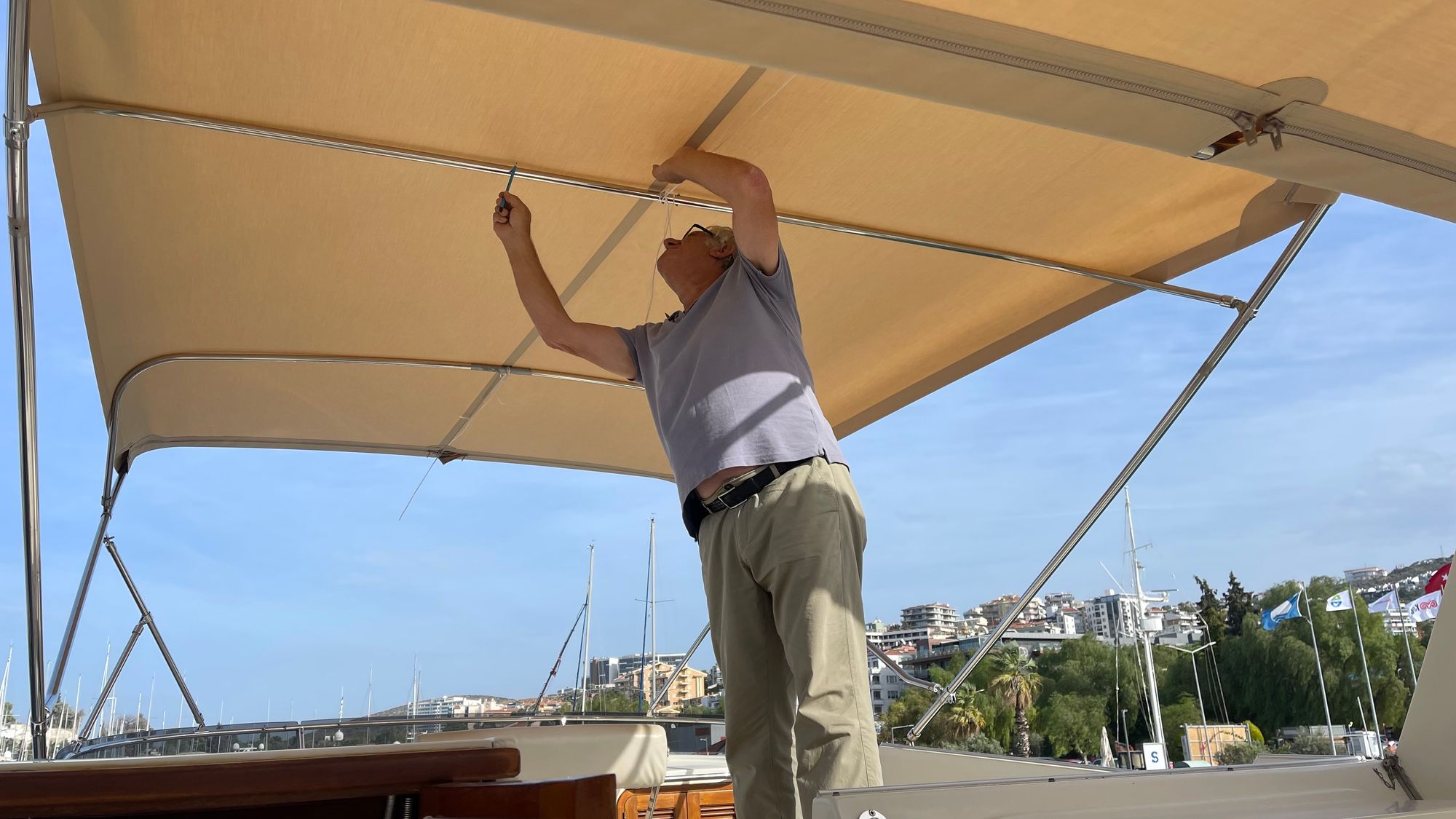
Fitting the new biminis
There are some decisions ahead. It's a 120 nautical mile trip, and we need to check out of Türkiye and check in to Greece. We could do that in a variety of places. We're not sure if we'll break the trip into two or three days (or more). Regardless, we're now very confident that the season is about to finally reach its end, and this time next week, we'll be tucked up in our winter berth back in Mytilene. While we've had a great season, we're looking forward to the break and change in pace, too.
Henk-Jan from MV Lady Liselot does a great review of the book, Footloose in the first few minutes here, check it out! Give him a like and a subscribe too.
The book continues to go well, although the sales have slowed a little. If you're interested, click here to find out more.

Until next time,
Tim & Karina
